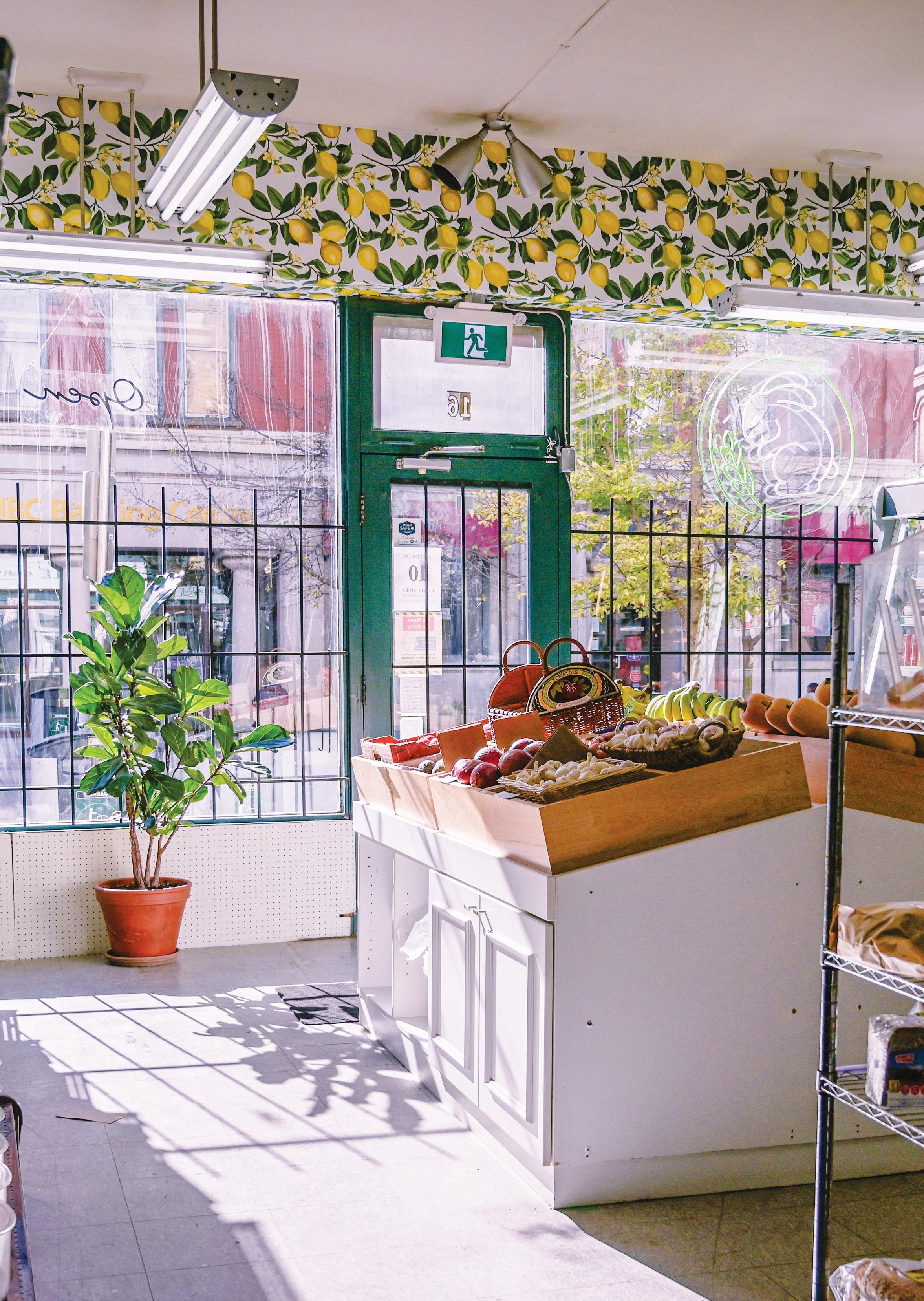

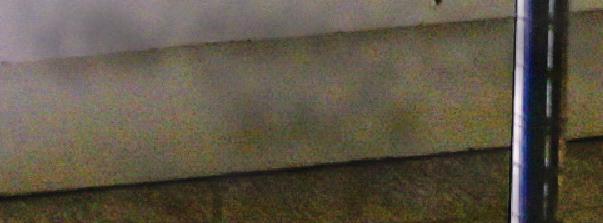
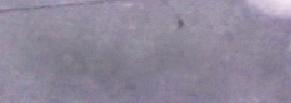



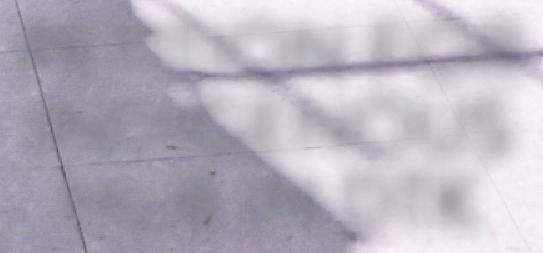
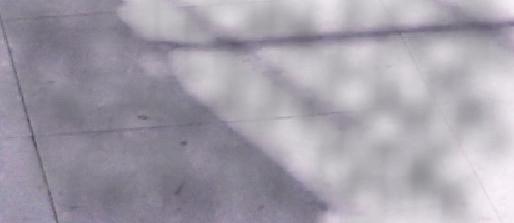


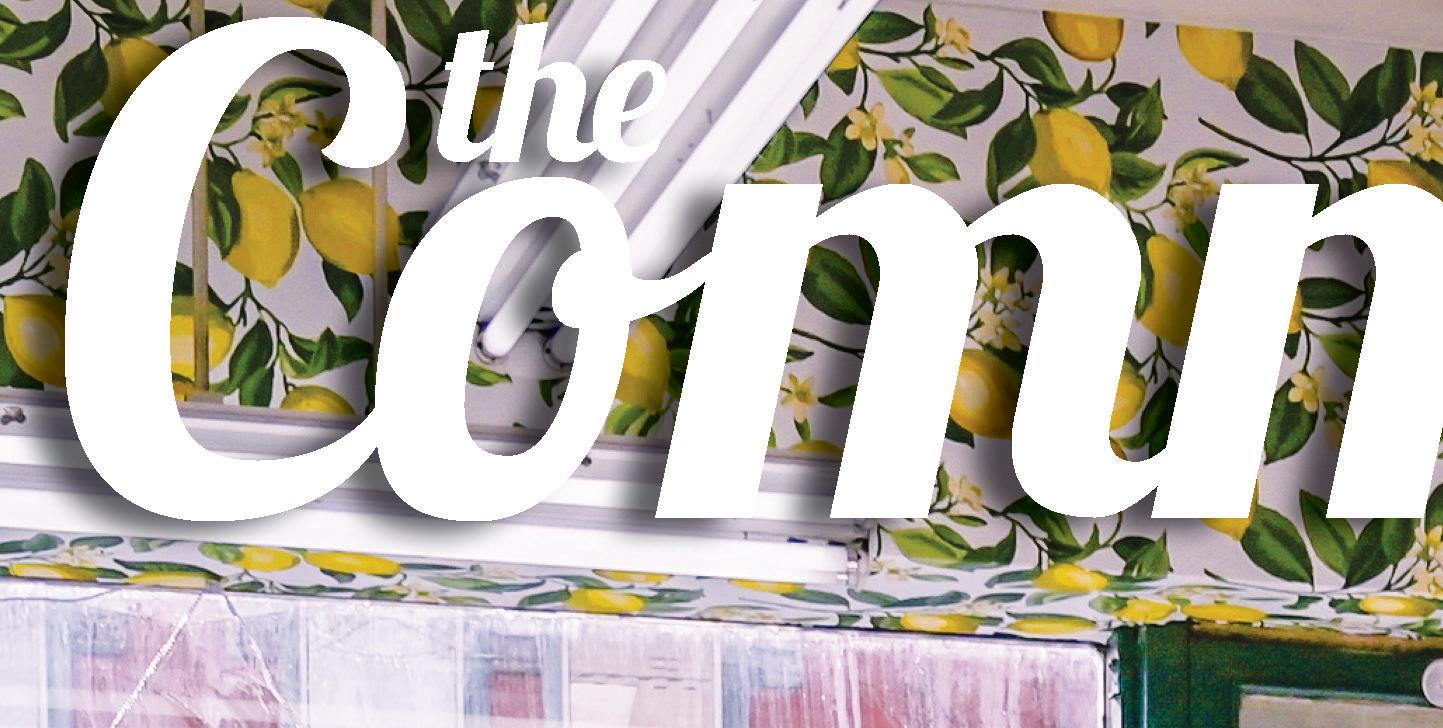
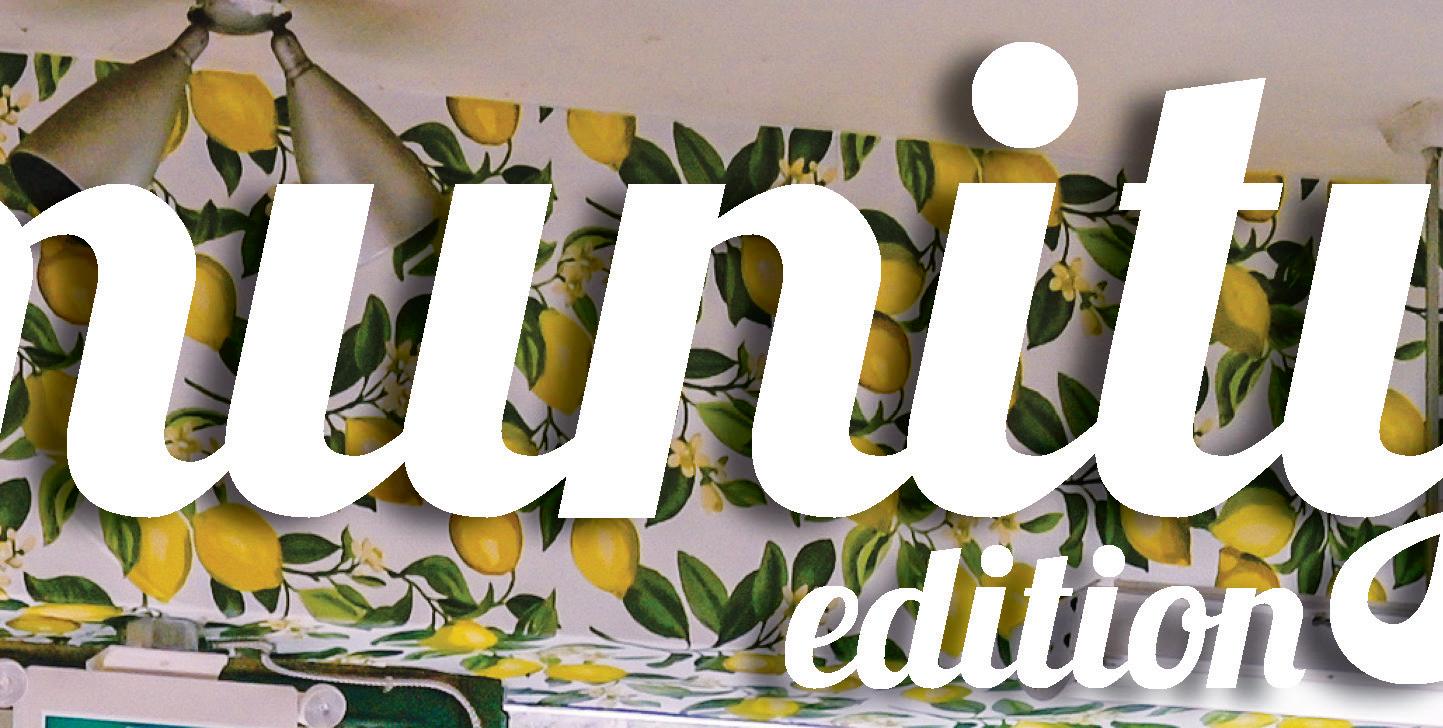

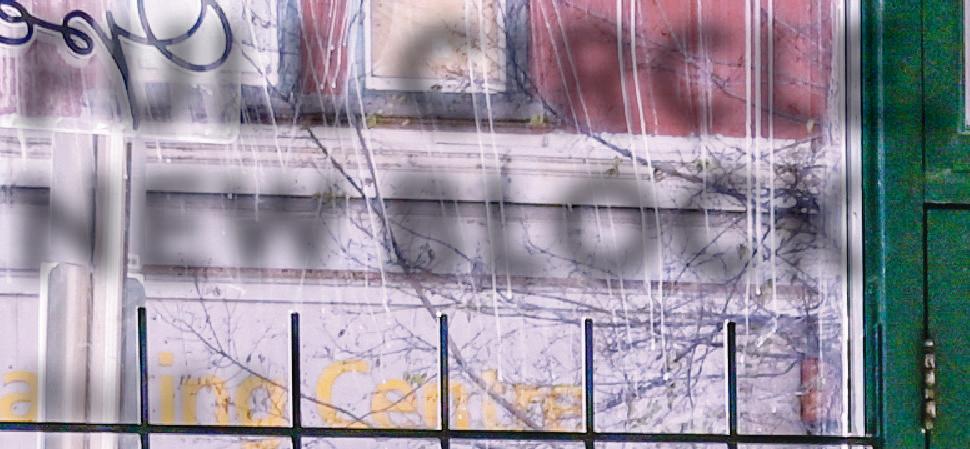

UW DRAG CLUB BACK IN ACTION PAGE 5 PAGE 8 PAGE12 WHAT IS PUNK? PETITION FOR INDIGENOUS HUB IN DTK VOLUME 10, ISSUE 2 • NOVEMBER 2021 PAGE 7 FULL CIRCLE, NEW BLOCK
We would like to acknowledge that Wilfrid Laurier Publications (WLUSP) is located on the Haldimand tract, traditional territory of the Neutral, Anishnaabe and Haudenosaunee peoples. This land is part of the Dish with One Spoon Treaty between the Haudenosaunee and Anishnaabe peoples. We recognize, honour and respect these nations as the traditional stewards of the lands and water on which WLUSP is now present.
INSIDE
Klassen
Stronge
Layla Morrison
Doan
Fitsum Areguy
Behzad
Sageman
Sutcliffe
Matas
Community Edition
alternative
and inform the
in 2012, the Community Edition
an editorially independent newspaper
by Wilfrid Laurier University Student
Waterloo, a corporation
share capital. WLUSP is governed by its board of directors.
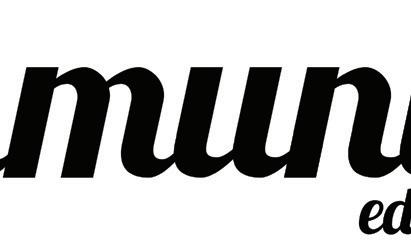
expressed within the Community Edition are those of the author and do not necessarily reflect those of the editorial board, the Community Edition, WLUSP, WLU or Centra Web. All content appearing in the Community Edition bears the copyright expressly of their creator(s) and may not be used without written consent.
The Community Edition is a member of the Ontario Press Council, which is an independent ethical organization established to deal with editorial concerns. For additional information or to file a complaint, contact info@ontpress.com or call 416-340-1981.
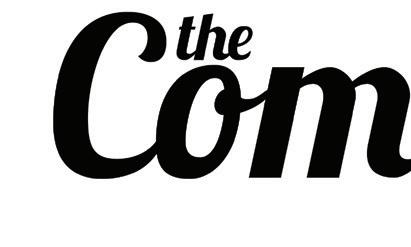
Preamble to the Community Edition Constitution
The Community Edition will keep faith with its readers by presenting news and expressions of opinions comprehensively, accurately and fairly. The Community Edition believes in a balanced and impartial presentation of all relevant facts in a news report, and of all substantial opinions in a matter of controversy.
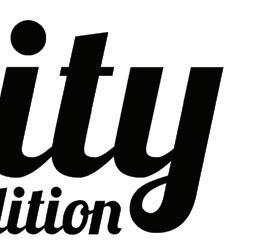
The staff of the Community Edition shall uphold all commonly held ethical conventions of journalism. When an error of omission or of commission has occurred, that error shall be acknowledged promptly. When statements are made that are critical of an individual, or an organization, we shall give those affected the opportunity to reply at the earliest time possible. Ethical journalism requires impartiality, and consequently conflicts of interest and the appearance of conflicts of interest will be avoided by all staff. The only limits of any newspaper are those of the world around it, and so the Community Edition will attempt to cover its world with a special focus on the community of Waterloo Region. Ultimately, the Community Edition will be bound by neither philosophy nor geography in its mandate.
The Community Edition has an obligation to foster freedom of the press and freedom of speech. This obligation is best fulfilled when debate and dissent are encouraged, both in the internal workings of the paper, and through the Community Edition’s contact with the community. The Community Edition will always attempt to do what is right, with fear of neither repercussions, nor retaliation. The purpose of community press is to act as an agent of social awareness, and so shall conduct the affairs of our magazine.
Editor in Chief Harleen Kaur Dhillon harleen@communityedition.ca Publisher Kurtis Rideout kurtis.rideout@wlusp.com Editorial Assistant Adrian Quijano Social Media Coordinator Kaitlyn Severin Staff Writers Alex Kinsella Kaitlyn Severin Rachael MacIntosh Staff Photographers Nick Stanley 2 Volume 10, Issue 3 Next issue: Dec.1, 2021 75 University Ave. W. Waterloo, ON N2L 3C5 519-884-0710 x 3564 Elfie Kalfakis Ajay Mehmi Altay Coskun Cara Vandermay CONTRIBUTORS THE COMMUNITY EDITION TEAM WLUSP ADMINISTRATION President Brittany Kovacs Executive Director Kurtis Rideout Advertising Manager Kurtis Rideout Directors Arshy Mann Emily Crump Jacob Segal Rice Mythreyi Vijayakulan Rosalind Horne Sara Sheikh General Inquiries info@communityedition.ca All advertising inquiries should be directed to Kurtis Rideout at 519-884-0710 x 3560 kurtis.rideout@wlusp.com COVER BY NICK STANLEY COLUMNISTS
4 4 5 HYDRO COMPANIES IN WR SET TO MERGE LUXE.ZEN ETHICALLY SOURCES GEMSTONES HUNGERCOUNT 2021 REPORTS ON FOOD BANKS 7 PETITION FOR AN INDIGENOUS HUB IN KITCHENER 6 NEW COMMITTEE FOR RESOURCES FOR OLDER ADULTS FEATURE FIRST UW DRAG CLUB IN PERSON PERFORMANCEIN THIS ISSUE VOLUME 10, ISSUE 2 NOVEMBER 2021 7 FULL CIRCLE FOODS FINDS NEW HOME 8-9 WHAT IS PUNK?: AN EXPLORATION EDITOR’S PICK 9 AN ODE TO LIVE MUSIC THIS ISSUE OF TCE WAS FUELLED BY PUNK ROCK, PUNK SPIRIT AND PUNKS. THANK YOU TO ALL OF OUR CONTRIBUTORS AND OUR INCREDIBLE TEAM AT WLUSP. 10 HARU NOON EPISODE 29 11 O CANADA: ACKNOWLEDGING MENTAL HEALTH 12 NEW TUNE REVIEW: GROUND OF BEING—PERSONA 13 THE IMPORTANCE OF BEING EARNEST IN DEBATE INSIDEWATERLOO: HARMFUL IMPACTS OF POLICING 14 14 NOVEMBER EVENTS LISTINGS REFLECTIONS FOR TREATIES RECOGNITION WEEK15 16 COSMIC RELIEF: A MONTH OF INTENSITY AND MYSTERY 12 Dave
Matthew Viveen Erik O’Neill Zachary
Phi
Mana
Cait
Deyanne
Jesse
The
is an
monthly intended to engage
community. Started
is
published
Publications,
without
Opinions
NOVEMBER 2021 // COMMUNITYEDITION.CA
The first national Poppy Day was held 100 years ago on Nov. 11, 1921. DAVE KLASSEN PHOTO
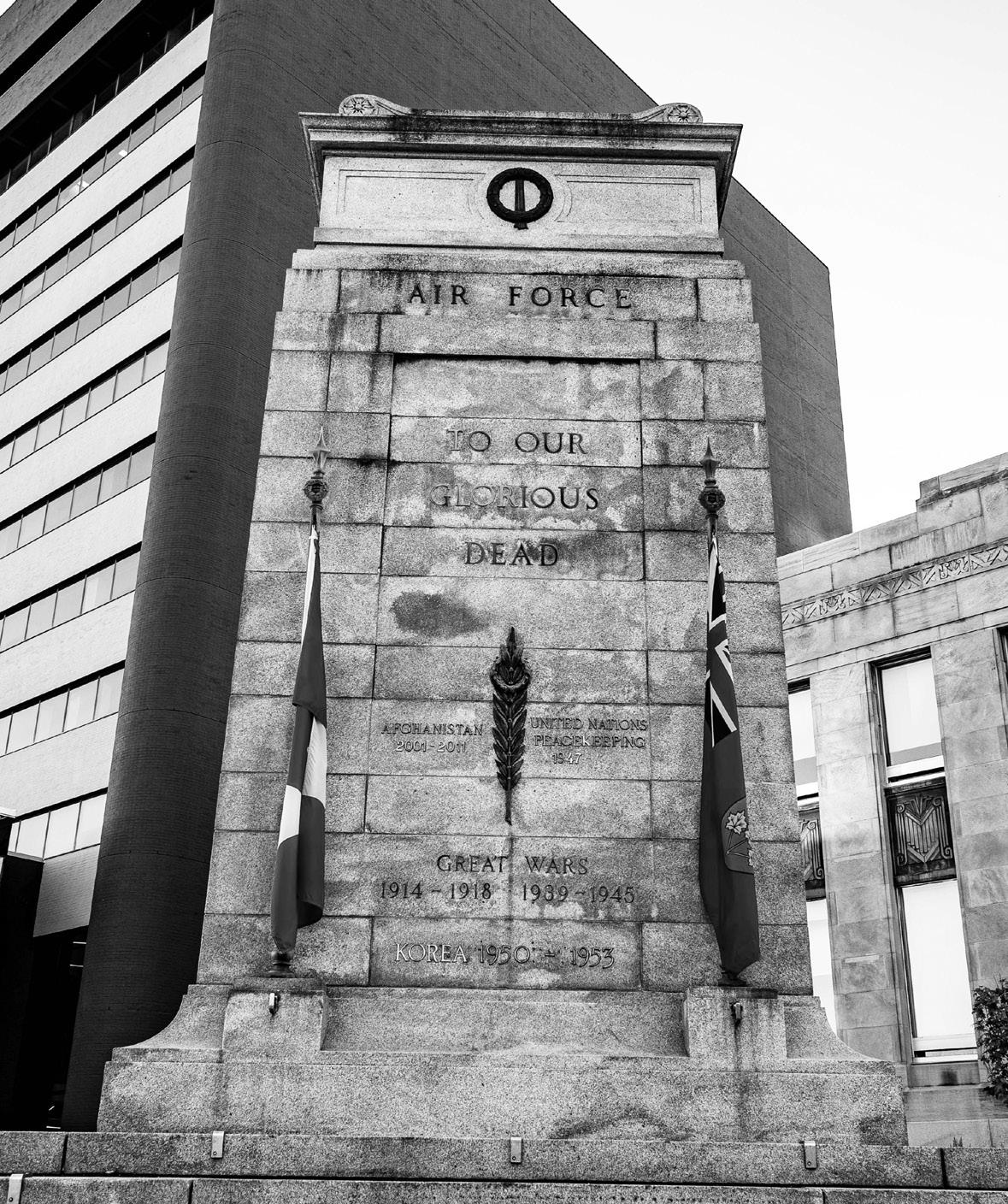
NEWS IN BRIEF
TEACHER SUSPENDED
Vice principal Julie Ardell went on to denounce the teacher, Gorian Surlan, for his actions being “racist and dehumanizing.” Surlan has been placed on home assignment. After he came into class on Friday with blackface on, both students and guardians were sent a letter of apology by the principals.
CARBON MONOXIDE AWARENESS WEEK
The province of Ontario recognizes Carbon Monoxide Awareness week from Nov. 1 to Nov. 7. Waterloo Fire Rescue is reminding KW residents to prevent carbon monoxide (CO) by having all fuel-burning appliances inspected every year. Homeowners are also reminded to install a CO alarm.
HIGHER WATER COSTS PROPOSED FOR 2022
The staff of Waterloo Region proposed an increase of $46.94 for water services in 2022 for the average household. Craig Dyer, Chief Financial Officer for the Region of Waterloo claims that the increases in utility costs and other expenditure areas are to blame.
MISSING PERSON FOUND
Waterloo Regional Police Service say 14-year-old Angelica MacDonald has been found safe and returned home. MacDonald was reported missing by family to WRPS on Oct. 30. In a tweet, WRPS thanked the community for their assistance.
SPELLS AND STARDUST
Sarah Midnight, Midnight Raven Studios creator, partnered with Downtown Kitchener to help organize the Spells and Stardust market which featured; vendors who carry alchemical, apothical and wiccan related products. The market also offered tarot readings, witchy prints and vintage finds.
WR VACCINE BOOKING SYSTEM
The Waterloo region is reopening its COVID-19 online booking system. The list of individuals who qualify for a third dose includes recipients of solid-organ transplants and those taking immunosuppressants. As of Monday, Nov. 1, people will need to make an appointment for a second or third dose if they have not already done so.
UW SECURES PLAYOFF SPOT
The University of Waterloo Warriors advanced to the Ontario University Athletics football playoffs on Saturday, Oct. 30 with a 36-8 win over the Wilfred Laurier Golden Hawks. The Warriors ended the game with 497 yards of offence, compared to 305 total offence for the Golden Hawks. The game took place on Warrior field, and the UW team included 26 graduating players.
TIMES FALL BACK FOR BELL
Bell Canada received a flurry of customer reports when their smartphones fell back an hour on the weekend of Oct. 29, a full week before the end of daylight savings time. Bell has since fixed the problem. It is not yet clear how the issue happened or why. Some customers of Virgin Plus, a subsidiary of Bell, were also affected.
PUNK ROCK FLEA MARKET PREVAILS
Waterloo’s infamous Punk Rock Flea Market will make it’s triumphant return this month after well over a year of cancellations. Patrons of the local arts scene are set to take over Rhythm and Blues in Cambridge for the first PRFM since Dec. 14, 2019 which took place at Chainsaw.
EDITOR’S
I love winter the most—it is my favourite season.
I love my fingers being a little cold and hiding my hands in a shawl or in the pockets of my coat. I love wrapping myself in oversized sweaters or blankets and drinking chai with cardamom and ginger and cloves and licorice root. I love the snow and the snow boots and big scarves (but I never wear hats).
I love the lights that decorate the season—the fairy lights for Christmas, the menorah, the lanterns we light for Diwali, the streetlights that turn on earlier and earlier. I love that the people before us took this cold and unforgiving season and made it warm er than even the summer.
I love the parties—although there are far less of them now and with less people. I love the warm kitchen with all the elements of the stove in use. I love the smell of foods—the potatoes being fried in a batter of chickpea flour and the curries and the sweets and the butter simmering in a large pot. I love picking at the piles of food in large trays as my mother prepares it.
I love a crowded living room with people sitting on the sofa and the extra chairs and the floor, all eating, all asking for something. I love (and don’t tell my mother this) being called to
bring this or that, to do this or that, to hear this or that.
I love the mismatched plates and bowls, especially the metal ones, because we have to bring out all the dishes for all the food. I even love cleaning all the dishes at the end of the night. I love keeping the children away from the stove. I love being sur rounded by the women—none of them blood relatives but all of them aunts and cousins and sisters and nieces and found family.
I love laying comforters on the floor for people staying over. I love fitting the guests in our house like a 3D game of tetris. I love opening the beds to take the blankets we stored there through the year and I love figuring out who can share with whom. I love rounding up all the bedsheets and cushions and warm things we have. I love the little girls going to sleep in my room because they are excited about a sleepover with “older sister” but waking up in the middle of the night to squeeze into their mothers’ arms.
I love the late-night phone calls home, not my home anymore. I love FaceTime and WhatsApp and barging in on my parents’ conversations with their parents and their siblings. I love the jokes, even the ones I don’t understand.
I love the blanket Charlotte knit for me, I love the shawl my grandmother sent me, I love the three-dollar set of fake vintage papers my friend gave me for Christmas last year. I love the 500-rupee note my grandfather gave me, the one I will never use and will probably frame at some point. I love getting letters from the friends that moved because they’re more special than texts.
I love scarves and gloves and books and hoodies and boots strewn across the floor and loud voices overlapping and roaring laughter and the ladies yelling, “don’t worry sister, I can do it!” and e-cards and chocolate and leftovers in ziploc bags and sweeping the floor for the fourth time that day and confusion and bangles and new pyjamas and flowing hair and mustard seed oil and cotton wicks and burnt out lamps and I understand. I under stand why Diwali was quiet last year and why it will be quiet still this time, but I love winter and the holidays and there is no other point to this note.
I love winter and I hope all the holi days this month and next month and next year are warm and fun for you as they have been for me.
NOVEMBER 2021 // COMMUNITYEDITION.CA 3
NOTE HARLEEN KAUR DHILLON
REGIONAL HYDRO COMPANIES WILL MERGE
putting in their climate change action plans,” Van Ooteghem said.
ALEX KINSELLA STAFF WRITER
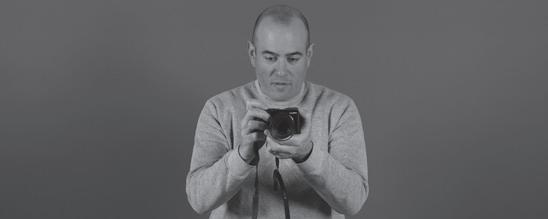
On Oct. 1, a proposed merger of Kitchener-Wilmot Hydro and Water loo North Hydro was announced by the two power utilities holding com panies, Kitchener Power Corporation and Waterloo North Hydro Holding Corporation.

The announcement was followed by unanimous approval from the munic ipal councils of Kitchener, Waterloo, Wellesley, Wilmot and Woolwich with a memorandum of understanding to merge the two holding companies. If the province and regulatory agencies approve, the new combined utility would be the seventh-largest power utility in the province and serve over 150,000 residences and businesses.
While the merger announcement may seem sudden, Rene Gatien, CEO of Kitchener-Wilmot Hydro, said they have considered the idea for several years. As with other organizations that provide service across municipal borders, the utilities work together to keep the lights on.
“Our teams have worked together for years side by side for different things because people in the community are side by side. We’re always looking for ways to provide more value to custom ers and to keep up with the things that are going on,” Gatien said.
Jerry Van Ootegham, CEO of Water loo North Hydro, agreed with Gatien.
“We’ve worked together on unregu lated business in the past. In the early 2000s, we formed a joint company to do telecommunications work and more recently, with Grand River Ener gy,” Van Ooteghem said.
Serious discussion on a potential merger began over a year ago, accord ing to Gatien. Late last year, the board of directors and shareholders of each
parent company gave the go-ahead for legal requirements for the merger. Once that is complete, Gatien said they will be able to apply for per mission to merge from the Ontario Energy Board. Gatien said this process could take upwards of seven months.
Grand River Energy was started in 2016 to pursue opportunities in the renewable energy sector. As regulated energy companies, Kitchener-Wilmot Hydro and Waterloo North Hydro
are not permitted to offer service behind the meter—that is, they are not permitted to do electrical installation inside or around a home or business.
“You’re seeing more local generation now happening. All the solar panels that you see installed across our communities. Those are relatively new developments in our business and I think you will see more of that as well with initiatives such as reducing our carbon footprint and communities
With the increased adoption of smart home technology, electric vehicles and other green technology, both CEOs said there will be a need to deliver smarter, unified hydro service.
“How do you bring on all of these distributed energy resources and still manage a good, reliable, quality distribution system? By putting the two companies together, it’ll open an opportunity for better efficiencies and an opportunity to bring somebody in under the new technology realms,” Gatien said.
Both Gatien and Van Ootegham said that no field positions will be lost with the merger. Corporate staff reductions will be handled through planned re tirements, but service should be at the same level or even better reliability.
Van Ooteghem said that the combined workforce will be able to respond fast er to issues across the service area.
“Service will be as good as or better than what we’re able to do today, espe cially if we invest in some of these new technologies that allow us to restore power more quickly. We will continue to provide the great service that both of our utilities have been providing all along,” Van Ooteghem said.
With the adoption of green technol ogies in residences and businesses, both CEOs said the time is right for the merger.
“This is the right thing to get our utilities ready for what our customers are going to need in the future,” Gatien said.
LUXE.ZEN’S BRINGS GEMS WITH AN ETHOS
ronmental destruction in the places where gemstones, crystals, and metals are mined. We aim to change that,”
Healey wrote on the company site.
ADRIAN QUIJANO EDITORIAL ASSISTANT
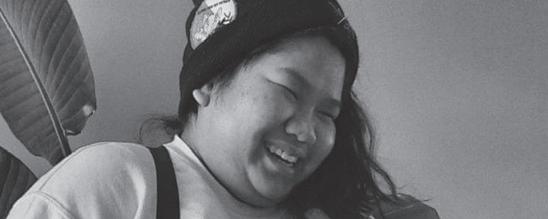
Founded by local Sarah Healey, the newest addition to Kitchener-Water loo’s small business lineup only uses ethically obtained gemstones in their pieces. Luxe.zen hosts a collection of rings, necklaces, earrings, and raw crystals.
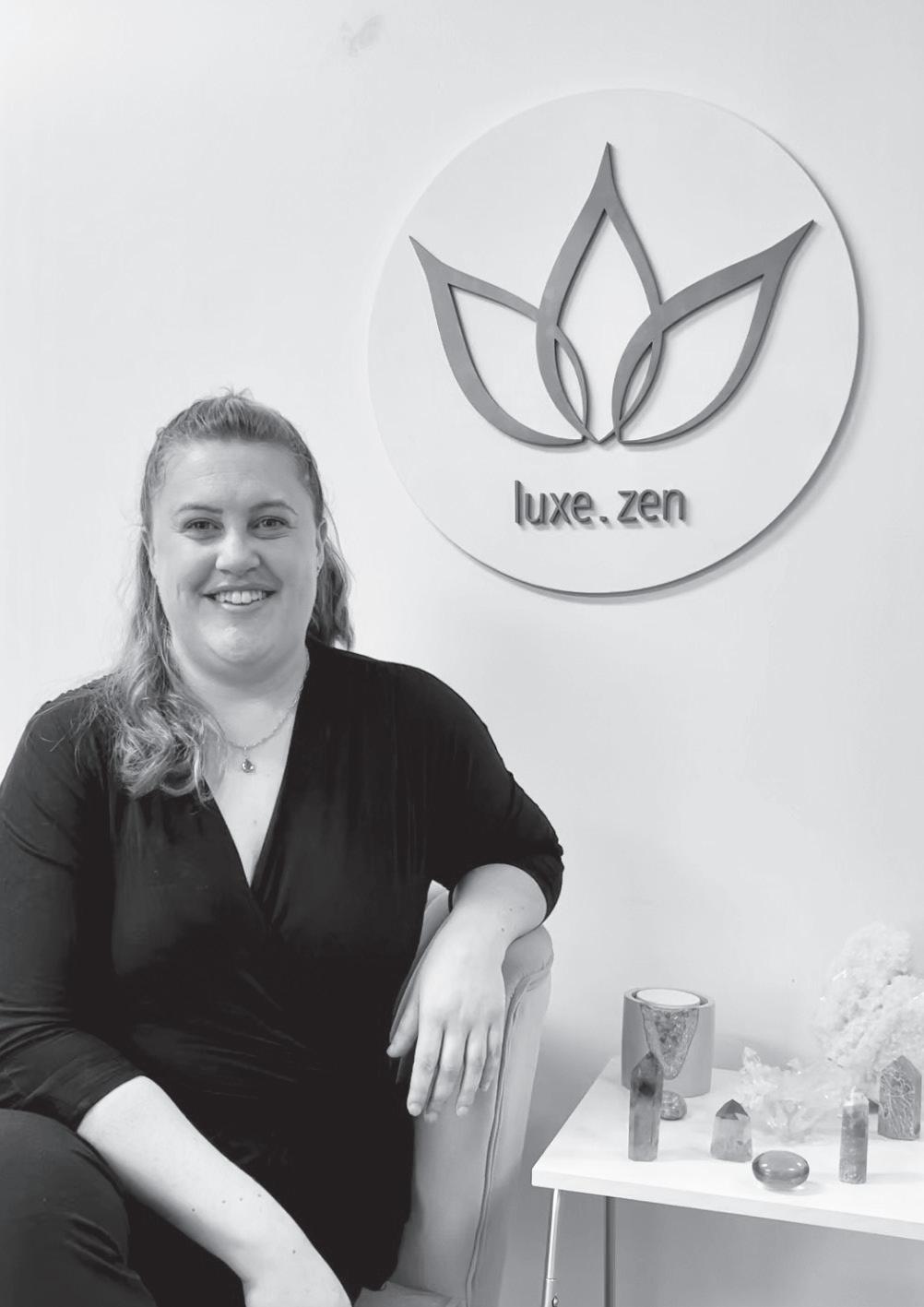
What started out as a side hustle during the pandemic has now grown into an in-person and online store, and is being carried by the Truth and Beauty Company.
“I’ve always turned to art to heal. I take a lot of inspiration with the gems themselves. I wanted to create things people could use, appreciate, and would last,” Healey said.
Now, Healey has a dedicated team of professionals to help turn her passion into a profession.
Luxe.zen focuses on creating afford able and beautiful pieces with human rights and sustainability in mind. They try to reduce their environmental and social impact as much as possible. For example, 80 per cent of the sterling silver and 14k gold used in their products is recycled and each product is packaged with low-impact packing materials which include upcycled paper and textile material.
“The jewellery industry has a prob lem: [the] pieces we love fuel conflict, unsafe working conditions and envi
“A lot of jewellers are calling their jewelry ‘ethical’ but are not being transparent about their sources,”
Healey said.
Luxe.zen works with Moyo Gems, an ethical gemstone collaboration that was founded in East Africa. Moyo Gems works with female artisanal miners in Tanzania and Kenya. These gems include rubies, sapphires, tour maline and garnets, among others.
Moyo means ‘heart’ or ‘life’ in Swahili, the dominant language in Tanzania and Kenya. Moyo Gems uses low tech nical machinery in their surface-level mining.
“The women miners are earning a living supporting their families,”
Healy said. “I’m actually able to report who mined the stones that I used and [Moyo Gems] connect jewellers to the source.”
In addition to their collaboration with Moyo Gems, Luxe.zen have also created their own gemstone eco-sys tem in their studio to reduce gem shipment emissions. The production team at Luxe.zen mostly uses recycled metals when producing their jewelry.
“We are working to change the industry by demonstrating good prac tices and advocating for all jewelry makers to do better.” Healey continues in her company’s ethos statement.
On Luxe.zen’s page, “Sarah’s Picks”, customers can shop a wide variety of gemstone jewelry that highlights each month’s cause. For October, gems in this collection help promote mental
health and wellness and 10 per cent of all proceeds from Sarah’s Picks help support Carizon Family and Commu nity services.
Alongside their quest to be an ethical business, Luxe.zen also encourages its customers to be informed consumers.
“Every decision, every purchase, ev ery social media like, follow and share can all create awareness and impact the better. This is what our business is all about. We are passionate about educating others on our industry and hope you can help us make a differ ence,” Healey said.
“If you have a vision of what you want the world to look like, go after it. There’s always an option as a con sumer for you to support and live your values,” Healey said.
For more information about and to support Luxe.zen, you can visit their website at luxezen.com or follow them on Instagram @luxe.zen.
NOVEMBER 2021 // COMMUNITYEDITION.CA 4
The two hydro companies have worked together many times prior to this merger. DAVE KLASSEN PHOTO
Sarah Healey began luxe.zen as an online store and now includes a workshop as
well. LUXE.ZEN CONTRIBUTED
PHOTO
LUXE.ZEN IS KITCHENER-WATERLOO’S NEWEST JEWELER THAT HAS A CRITICAL MINDSET ABOUT THE JEWELLERY SUPPLY CHAIN AND SPECIALIZES IN ETHICALLY SOURCED GEMSTONES.
HUNGERCOUNT 2021 REPORT RELEASED
 HARLEEN KAUR DHILLON EDITOR-IN-CHIEF
HARLEEN KAUR DHILLON EDITOR-IN-CHIEF
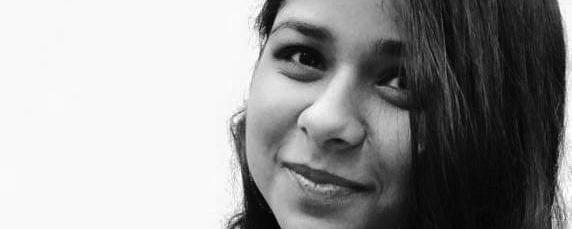
The HungerCount 2021 report was released on Oct. 28, 2021 and provided a summary of food bank usage throughout the pandemic as well as policy recommendations. It said that visits to the food bank The report emphasized that the pandemic amplified pre-existing social problems that need to be addressed.
Wendi Campbell, CEO of the Food Bank of Waterloo Region, said that the Canada Emergency Response Benefit (CERB) helped mitigate increased food bank usage at the beginning of the pandemic. Although the mode of operations changed, the Food Bank saw fewer people requiring their services. Returning to the prepandemic normals would be taking steps back as it showed the positive impact of strong policies.
“[We] can’t go back to pre pandemic normal because I think we have learned—as a food bank, as a community, as a network of social service partners across Canada—we have seen this difference enhancing social assistance programmes,” Campbell said.
“And so we’ve shown that a minimum income or basic income actually makes a difference in people’s
lives. And people ability to have the economic security to get food on on their own. And so we don’t want to go back. We want this to be a moment in time where we can shed some light on what does work and how collaborative approaches make a difference in the lives of the most vulnerable people in our country,” she said.
The report stated that there are different demographics that require the most aid depending on the environment. In urban areas, it was single people living alone that used the food bank the most while in rural areas, seniors and people with disabilities struggle with rising costs of living. Racialized people were also disproportionately impacted in urban areas.
In Waterloo Region, Campbell said both the urban and the rural insights are important.
“What’s interesting about our network is that, you know, our food assistance network in Waterloo Region is working with programs in the large urban centre, but also in the rural community... So it adds a level of complexity,” she said.
Of the food banks that saw decreased usage, anecdotal evidence suggested that increased financial support, quarantine restrictions and “pop-up” food security initiatives contributed to the decrease. However, people that experienced job loss due to the continuing pandemic and lockdowns were accessing the food banks more often.
“Even with the wider base of
support that the new support system offered, however, the pandemic and its economic impacts persisted, as more contagious variants of the virus emerged and the strain on the health care system worsened...People who were unemployed because of the pandemic, single-parent households, recent immigrants, and racialized or Indigenous communities experienced significantly more hardship than other groups,” the report stated.
In particular, the rising costs of living contribute to more usage of the food banks. According to the report, several contributing factors to food bank usage were amplified during the pandemic.
“Regardless of where the food banks were located, rapid food inflation, high housing-related costs, and low incomes—whether related to low benefit levels, job loss, or both—were the main reasons people gave for accessing food banks. These factors have also increased the frequency of need for food banks,” it said.
For dealing with the deepening poverty during the pandemic, food banks often increased the amount of food they offered—where they normally limited access to once per month, they allowed more frequent visits to sometimes bi-weekly or even weekly.
The report includes five policy recommendations: increased support for low income renters, modernization and expansion of supports for low wage and unemployed workers, progression toward a minimum
income floor, increased support for low income single adults and more measures to reduce northern food insecurity.
“We have a role to play as a food bank as part of a national network to start having really meaningful conversations about what are those things that we can do as governments as community partners, through things Canada has laid out a number of recommendations in the report for lasting policy change that will make a difference,” Campbell said.
As the region has been facing a housing crisis, the first recommendation is especially relevant. The report recommends implementing national rent support program, increasing the investment in the Canada Housing Benefit, introducing new investments and building supportive housing for people with mental and physical health disabilities, and exploring new and faster ways of acquiring affordable housing.
Even prior to the pandemic, food banks have been reporting every year that the high cost of housing is one of the main reasons people walk through their doors looking for support,” the report stated. “Since the beginning of the pandemic, we believe that the CERB and other pandemic-related supports, combined with local and provincial moratoriums on evictions and deferred payments, have stemmed the tide of renters having to seek help from their food banks, but we expect that to change.”
Campbell said fighting for the social policies that showed fewer people needing access to food banks is worth fighting for. She said Waterloo Region has one of the most innovative food access networks in Canada because the community takes a collaborative approach.
I think that nobody deserves to be hungry and nobody should have to worry about where their next meal comes from...It’s complicated to apply an act of social assistance and it’s just adding layers of complexity to people’s lives. And we have all lived through 19 months of everything that we do in the world now is complicated.
And how do we make things easier for everybody including the lives of those who can’t do it on their own?
And so what are the other systems and support that we can improve?,” she said.
“If you’re hungry, you can’t navigate all of these systems. So let’s make sure people are fed first. But we want to make those connections easier for people to access those supports and services as well. So that they can work towards improving their lives, improving their economic security, their stability, their job security.
[And we need to be] working in collaboration with governments to make long lasting change,” Campbell said.
5NOVEMBER 2021 // COMMUNITYEDITION.CA
HungerCount 2021 released it report and offered policy recommendations to decrease the need for food banks as well as giving insight into how the food banks have fared over the pandemic.
HARLEEN KAUR DHILLON PHOTO
The Waterloo Age-Friendly Committee, which was established in 2010, released new resources for older adults in October. These resources include the Aging Well Directory, the Wellness Calendar, and The Guide to Improve Social Connectedness.

“We work in collaboration with the city to identify opportunities to really strengthen overall connectedness and belonging for folks across the age spectrum, including older adults,” Jenny Flagler-George, chair of the Age-Friendly Waterloo Multi-Agency Committee, said.
The committee focuses on community-informed work and facilitates community involvement through tactics such as holding an annual Age-Friendly Waterloo forum. The forums generally follow a certain theme, with 2020’s being “Respect and Social Conclusion”, and involve the committee asking the public questions to understand the community’s priorities.
“We’ve really dedicated [our] engagement to focus on ideas that have emerged through [discussions with the community], such as ensuring a sense of belonging for older adults across various communities in
Waterloo Region, with a focus on newcomers and folks from equitydeserving groups,” Flagler-George said.
Community feedback led to projects such as the Aging Well Directory, a document that lists agencies, institutions, support networks and cultural groups, as well as health, recreation, transportation and housing resources along with any other information that may be useful for older adults living in Waterloo. The comprehensive directory provides names and contact information for companies and services relevant to older adults.
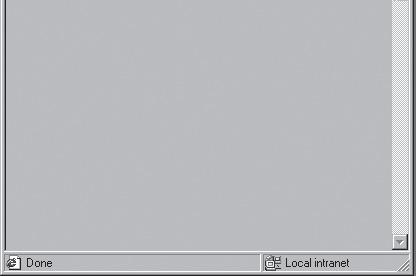
The Aging Well Directory for 20222023 is available both online and in a printed format at Waterloo recreation facilities and public libraries.
“When we develop resources and tools we try to always ensure that they’re accessible in multiple formats to ensure that they are getting out to as broad an audience as possible,” Flagler-George said.
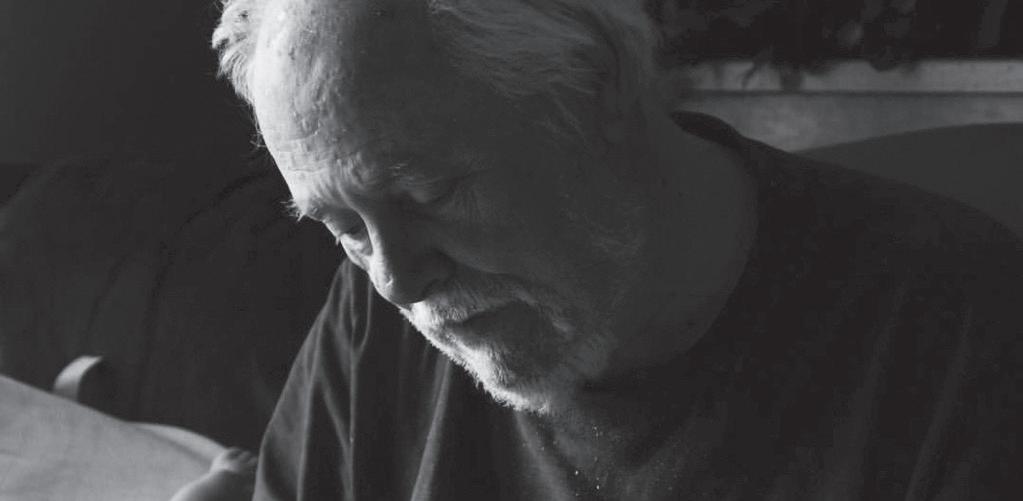
Another project by the Waterloo Age-Friendly Committee is the My Wellness Calendar, a tool that gives older adults in the community a way to monitor their daily health.
“[The calendar] allows individuals to track how they’re feeling each day and

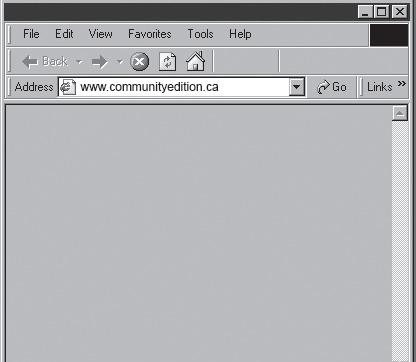
gives them a place to record [their] important appointments, birthdays, events, and, using a four-point scale, starting from ‘I feel excellent,’ ‘I feel good,’ ‘I feel average,’ ‘I feel poor or bad,’ older adults can also record how they are feeling daily,” Flagler-George said.

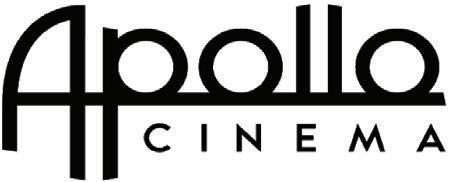
The calendar also points to other resources in the region and can be shared with family and health professionals to help monitor mental/ physical health and well-being. The My Wellness Calendar can be found online or at Waterloo recreation facilities and public libraries.
“The City of Waterloo, as well as the



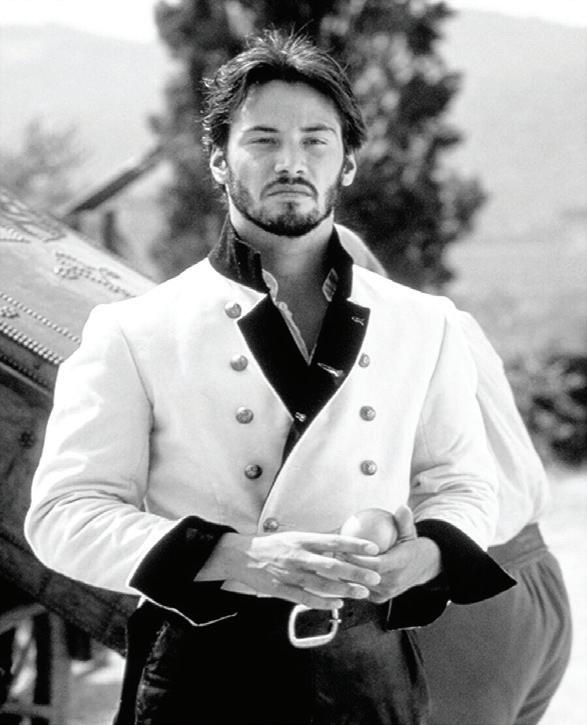
Age-Friendly Waterloo Committee, has identified social connectedness as a key priority, which, I think, [is] strongly reflected in the city’s strategic plan as well,” said Flagler-George.
The Guide to Social Connectedness project was led by Tiffany Smith, Manager of Community Programming with The City of Waterloo. This guide encourages access to resources in the community and provides eight specific tips for avoiding social isolation. For example, the guide advises being mindful of changes in your mood, selfesteem, and motivation.
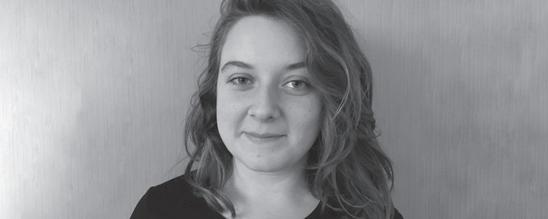
“Something that I would say is pretty unique to our committee is that we have a strong university collaboration. We work with Dr. John Lewis from Planning at the University of Waterloo who helps to support our access to a lot of student work. So we work very closely with masters students and co-op students to help ensure that the work that we do not only is rooted in community, but also that it’s evidence-based and has solid evaluation components along with it,” said Flagler-George.
Waterloo received the Age-Friendly Community Recognition Award from the Province of Ontario in 2018. Waterloo has also been given an official designation as an age-friendly community by the World Health Organization.
Those interested in joining the Waterloo Age-Friendly Committee are encouraged to reach out to Jenny Flagler-George at jflagler@uwaterloo. ca.
THAT’S WHAT YOU ARE INTO
6NOVEMBER 2021 // COMMUNITYEDITION.CA WHOA! W WH H HO O OA A A!! ! aKEANUREEVESappreciationevent FREEFORMEMBERS!MUCHADOABOUTNO NG NOIRVEM JOHNNYMNEM BILL&TED'S EXCELLENTADVENTURE APOLLOCINEMA.CA APPOOLLLLOOCCIINNEEMMAA..CCA A NEW ONLINE RESOURCES FOR OLDER ADULTS
RACHAEL
MACINTOSH STAFF WRITER
YOU CAN ALSO FIND US ONLINE IF
COMMUNITYEDITION.CA
The Waterloo Age-Friendly Committee has released new resources for older adults in the region.
BRIT KOVACS PHOTO
LOCALS PETITION FOR INDIGENOUS HUB
ALEX KINSELLA STAFF WRITER

The first National Day for Truth and Reconciliation on Sept. 30 was a day not just for reflection, but also for action. Bangishimo Johnston, a local Indigenous rights activist and leader, started a petition at the time calling for local leaders to create a permanent space for Indigenous communities to gather, connect and celebrate their cultures.
Waterloo Land Back activists created a petition which called for the former Grand River Transit Charles Transit Hub site in downtown Kitchener.
Petition signee Melissa Roe voiced her support for the space.

“16,000 Indigenous people live in this region and are asking for a community hub to continue to deepen cultural connection. I couldn’t imagine a better use for this space,” Roe said.
Anthony Warren, another petition signee, wrote that he supported an Indigenous hub as part of reconciliation.
“This is important for our Indigenous community members and an important part of Reconciliation,” Warren said.
The Region of Waterloo owns the site and it has remained out of use for transit since the launch of the ION light rail transit system in 2019. Since launching, the petition has received over 3,000 signatures.
Johnston said Indigenous groups have tried to create a community space for over a decade. Groups used the pavilion space in Victoria Park but were frustrated at the costs associated with using the facilities.
“One of our demands was that all fees be waived for the Indigenous community to be able to gather. We were watching our own community
members struggle with trying to come up with $500 to have a community feast at the pavilion. We were asking ourselves, ‘why should we have Indigenous people have to pay fees to gather on our own land?’,” Johnston said.
An agreement was reached with Kitchener to waive the fees, but the COVID-19 pandemic struck and gatherings were no longer possible.
The discovery of hundreds of graves at former residential school sites in the summer of 2020 inspired a renewed push to find a dedicated space.
Johnston said they found support for the idea of using the former transit hub from multiple groups, including students from the University of Waterloo’s School of Architecture. The students’ program included a project working with a local community
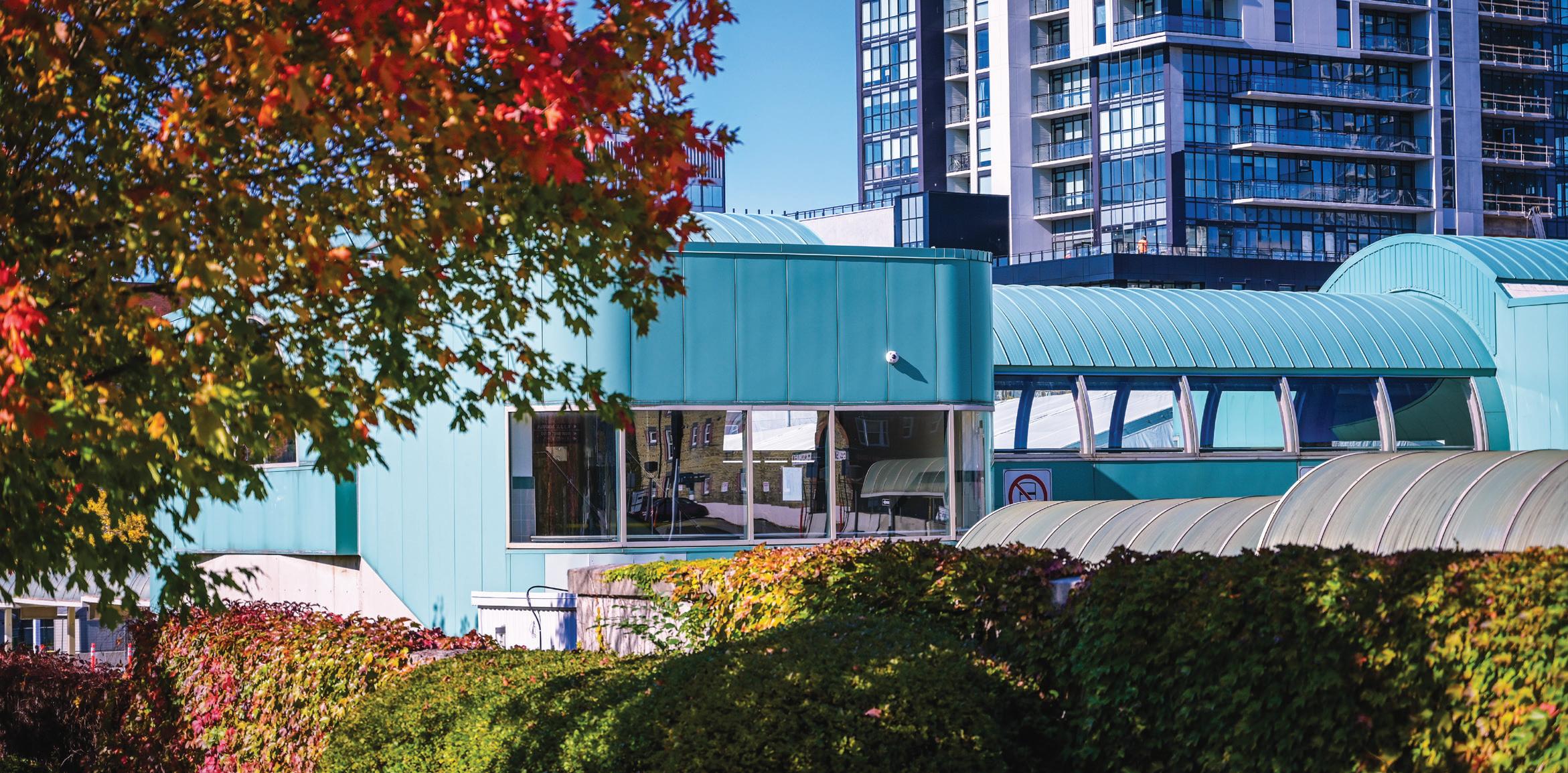
group.
“We met with them a number of times and gave them ideas of what we thought an Indigenous community space might look like in downtown Kitchener. They provided us with these amazing blueprints of what it could look like,” Johnston said.
While the former transit hub site would be ideal, Johnston said the blueprints and the suggestion of the former transit hub are more a starting off point for a conversation on what an Indigenous space could look like. They said other local groups and leaders, including ReallocateWR and Ward 9 councillor Debbie Chapman, have voiced their support to move the conversation forward.
While there has been support for the plan, Johnston said they were disappointed to see the City of
Kitchener ask for suggestions on uses for the transit hub site. They said responses have included everything from a grocery store to options for affordable housing.
“Affordable housing is actually part of the blueprints right now. We would love for it to maybe become a home to the K-W Urban Native Wigwam Project or possibly using The Healing of the Seven Generations or any other Indigenous organizations,” Johnston said.
Johnston said they do not speak for every Indigenous community member. Johnston and fellow Land Back Camp organizer Amy Smoke are meeting with leaders from other local Indigenous organizations to discuss the petition and different options for creating a permanent space for the Indigenous communities.
“It’s not up to me and Amy. We’re just two folks who want to see change happen within their region. We do not speak for the local Indigenous communities. But change needs to take place. The community has been asking for this for the last ten years,” Johnston said.
Regardless of what happens with the site, Johnston wants the community to know that a permanent space for Indigenous communities is critical to moving reconciliation forward.
“We do not have our own community gathering space, and that’s so important. It would just be nice for us to be centralized in an accessible space like the terminal. If it doesn’t go there, I would really like to continue working with the Region and help them find a place that is acceptable for the Indigenous community,” Johnston
FULL CIRCLE FOODS FINDS NEW HOME ON KING ST.
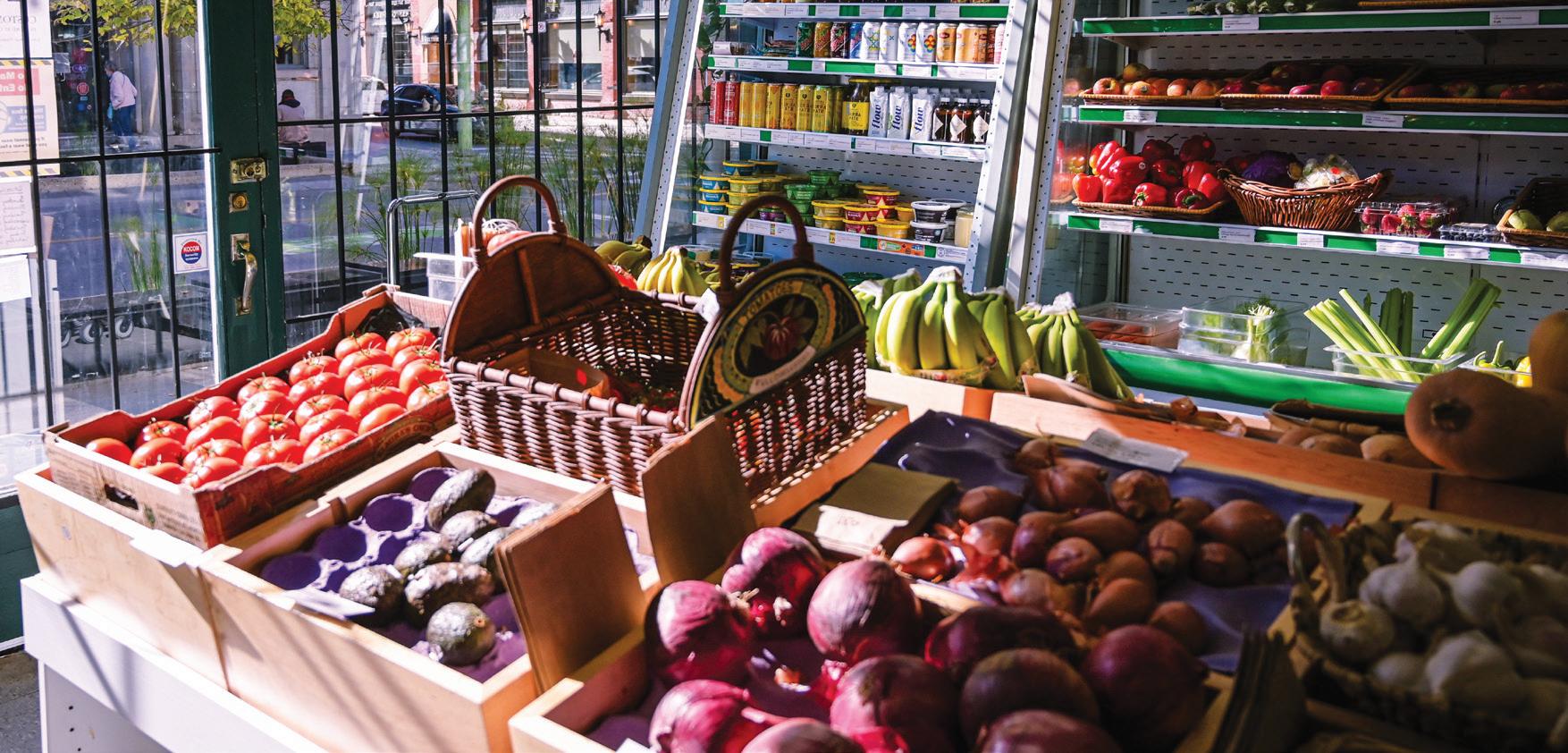 KAITLYN SEVERIN STAFF WRITER
KAITLYN SEVERIN STAFF WRITER
After almost 18 years, Kitchener’s grocery and bulk store, Full Circle Foods, has moved one block away to their new location on 16 King St. E.
Full Circle owners Sam Nabi and Julia Gogoleva, opened their new King St. E. location on Oct. 6. The two have owned and operated the business since 2018, and aims to sell healthy, local, plant-based foods with a focus on zero-waste shopping.
“There’s definitely a lot of community support behind Full Circle,” Nabi said. “It’s the kind of place where, even before Julia and I took over ownership, we would always run into our friends there. We are really happy to be taking it on and bringing it into this new home.”
According to Nabi, there are two major reasons for the move. The first is the trend of small and independent downtown businesses who were beginning to ditch the rental market and instead purchase properties.
“The rates right now are much
higher than we would be spending monthly to actually pay the mortgage of the building we just purchased,” Nabi said.
A five-year contract was also coming up for renewal at Full Circle’s Charles St. location and the building had been sold—this is when both owners started to look at other options.
With the help of two more friends, they purchased a three-story building
on King Street, which is being used for commercial and residential real estate.
“We definitely wanted to stay downtown, even though we had the idea of moving away from our previous location. It was really important to us that Full Circle stays in the neighbourhood and continues to provide that service for our neighbours.”
Both Nabi and Gogoleva and
their regular customers are already enjoying their new space on King St. E.
“It’s a fantastic space for the store. It’s right at the intersection of King and Queen and it took us a creative path to get there,” Nabi said. “There are certain customers that have been shopping at Full Circle since 1981 that are still shopping with us today. We’re very grateful that they followed us through four different moves.”
This is now the fifth location Full Circle Foods has been situated in Kitchener. Before their long-term location on Charles St., the business was also located on Victoria St., King St., and Weber and Victoria St., which was their first location in 1981. The new space features a new layout and some new products, including more variety to their bulk section. To include a more zero-waste approach, the store features their own return system where customers can borrow a jar for a dollar and get it back once the jar is returned, as long as it is cleaned. Customers can also earn a point every time they bring a returnable glass jar or bottle back to the store and redeem points towards their purchases.
With the opening of their new space, the business is also planning another big event this year—their 40th anniversary celebration on Nov. 17.
“We haven’t finalized all the details yet, but there will be some products on sale during our anniversary week. We will [also] have some surprises to give away from our vendors and local suppliers, so there may be a chance to win a gift basket or product samples,” Nabi said.
7NOVEMBER 2021 // COMMUNITYEDITION.CA
Full Circle Foods has moved to a new building, one that is owned by the store’s owners after several years of renting spaces.
MATTHEW VIVEEN PHOTO
The idea to turn the former Charles St. terminal into an Indigenous hub has gained support from local residents, including Indigenous members of the community.
MATTHEW VIVEEN PHOTO
THE IMPORTANCE OF PERFORMANCE AS A COMMUNAL OUTLET

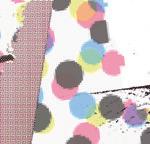

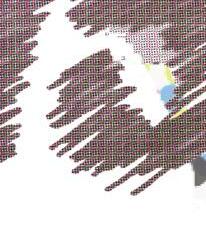

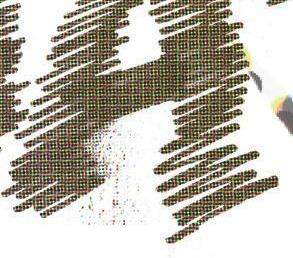
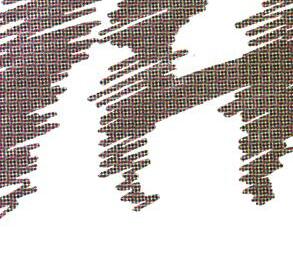
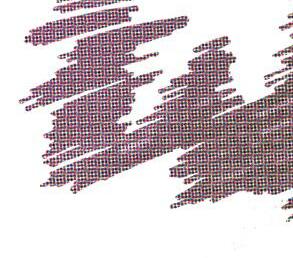
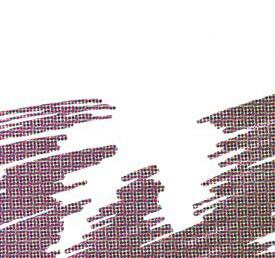
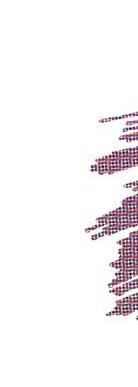
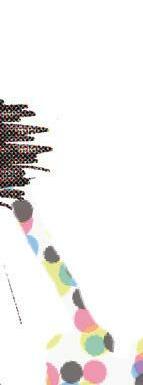
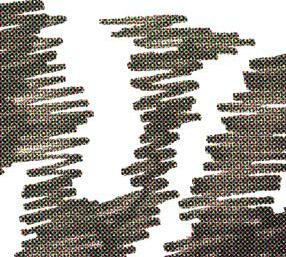

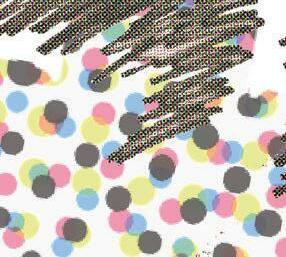

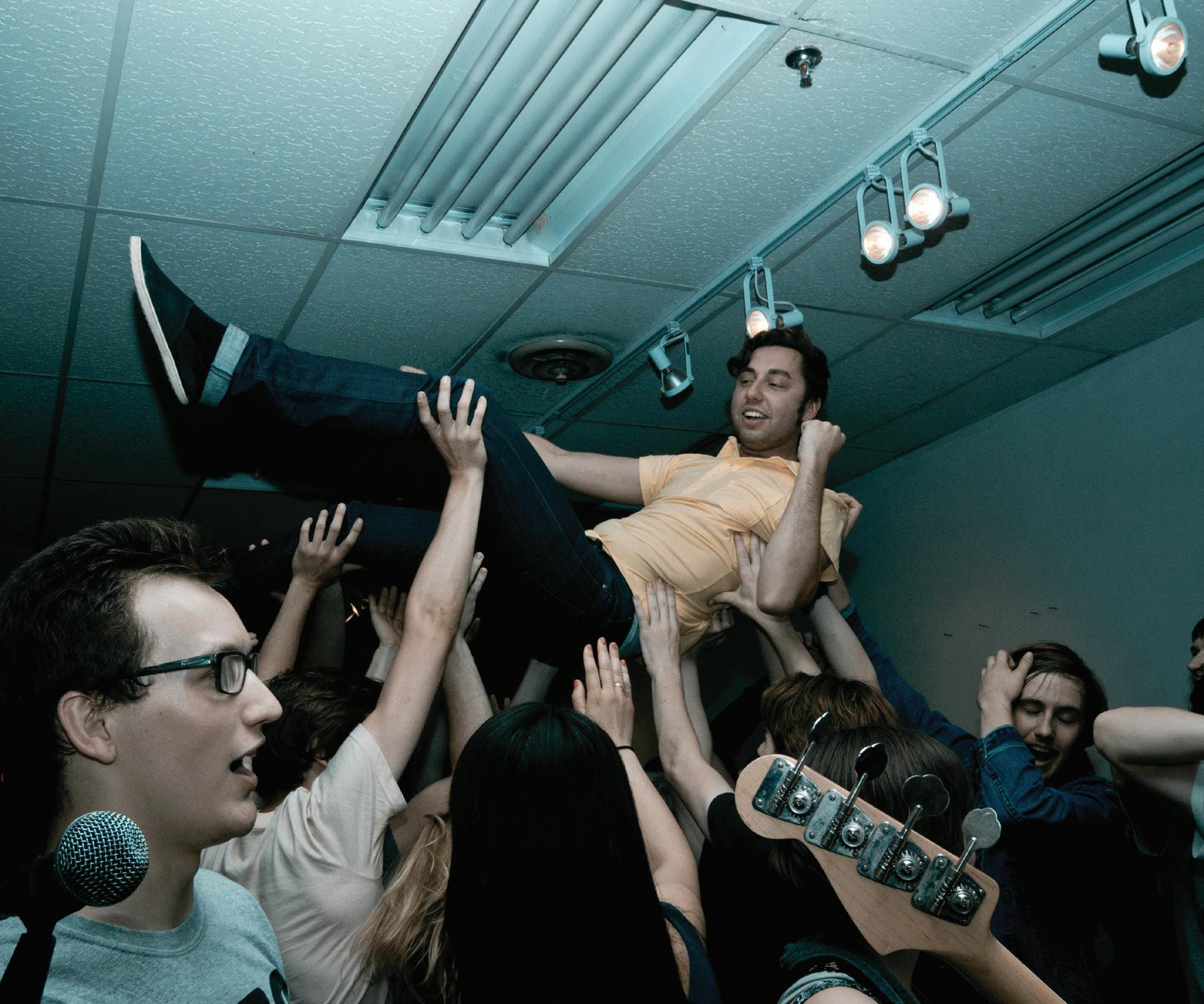


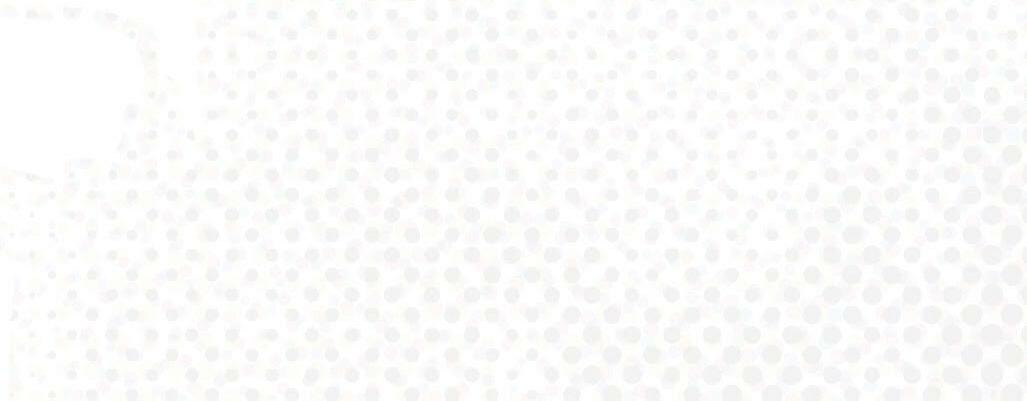




J: "Punk is all about freedom and being yourself, it's a place where you can do whatever you want, wear whatever you want, say whatever you want etc. It's almost like it's a space away from the conformist society where we can be in the underground doing our own thing and make god awful music that will entertain the masses and create hell.
Punk is also very DIY you don't need a certain shirt or certain pants to be punk, you can literally write on shirts with paint or nail polish and add little things to it like safety pins or something.

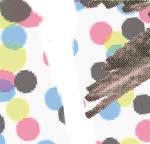

Expression is everything in punk rock in which people can say F you to big governments, big pharma and you to authority, but punk is also family."
LEAF GRIZZLY "Punk is living your life in balance of enjoyment and your own moral compass regardless of what the societal stance is on that, and most importantly, not being concerned what others may think. Oh and spikes are sick."

KYLE (HAVE HOPE): Punk is an idea. It goes well beyond a genre of music or a style. Punk is everything and nothing. It is to go against the status quo, whatever that might mean to you, and to be authentic to yourself and others about who you are as person regardless of who that is.
DRAMAMINE "punching Nazis"
My friend called me a punk the other day and I brushed it off.
The inner child in me felt validated but the lack of spikey accessories in my wardrobe pointed towards an alternate narrative. don't really listen to the Misfits or the Ramones as often as I did when was child, either.
That's a pretty facetious way to illustrate a point but the interaction brought us both right back onto this planet pretty quickly. The conversation shifted to "what is punk" in a matter of minutes and all of a sudden we were back at square one.
A lot of people who have had this discussion will be quick to illustrate the fact that it's not one that offers any sort of resolve.
We can look at the dictionary, which will tell us that punk is either "a loud, fast-moving and aggressive form of rock music, popular in the late 1970s and early 1980s" or "a worthless person".
Thanks for the tip, Oxford Languages.





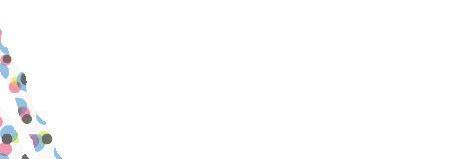

It feels weirdly good to say that Google and Wikipedia haven't

been very helpful, and that kind of illustrates the point a little bit more effectively. As much as some people might tell you otherwise, punk is far from dogmatic.
There is a core thread that weaves through any sort of intellectual answer to the question 'what is punk?' and the first descriptor that comes to mind is "community". The second is DIY. But those are arguably interchangable, or at least, interdependent.

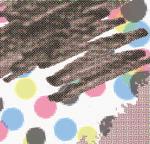

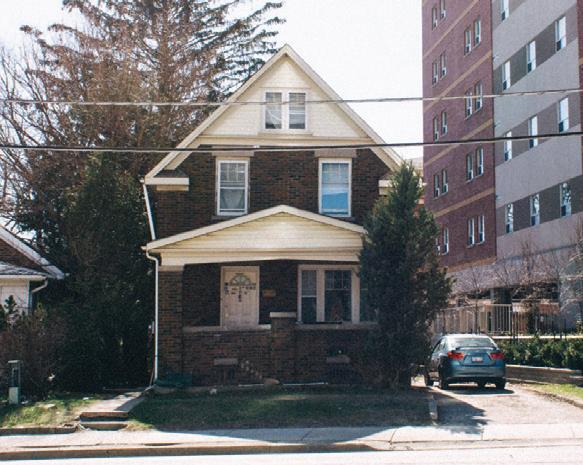
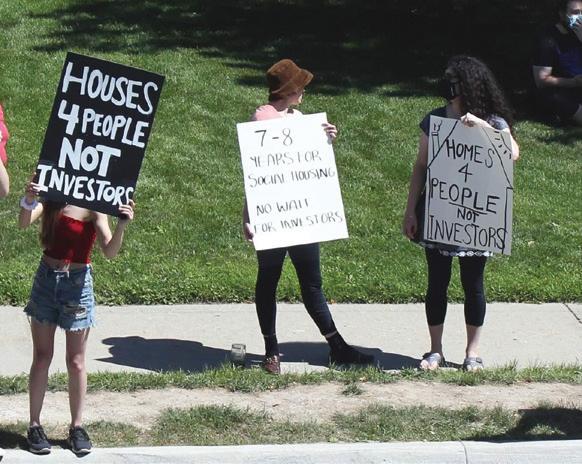
With this in mind, there is no viable way for one to easily quantify what punk is to the individual or what it can achieve for the collective. The best way to rectify this dilemma is to cast a wider net.
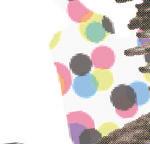
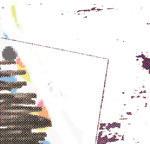
So I did that.
This spread is dedicated to the memory of Candace "Candie" Miner, a friend to many in the KW music community and a person that truly embodied the greatest aspects of what it means to be punk.
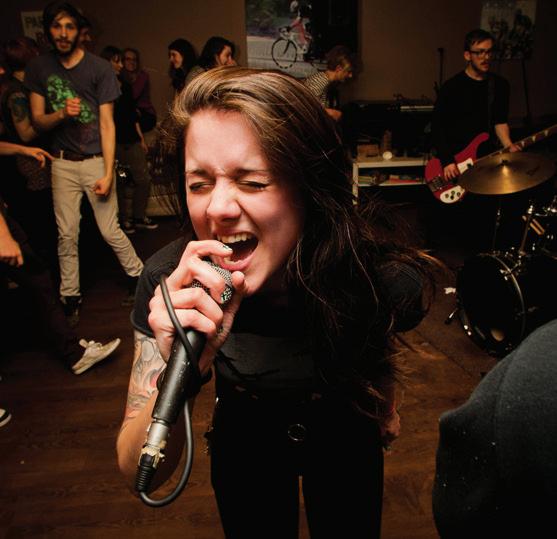
Holden: "Following a set of morals and having goals that push you to be the best person you can be. Also being a role model and leader in your community."
N/A: "Genuine, unpretentious, and forever changing. Having strong personal values that focus on authentic expression & sticking to that.

punk is not a sound punk is not a style punk does not have gatekeepers punk is not about being into obscure shit punk is not about rebelling without purpose punk is not about appealing to other punks punk is not about respecting the heritage of punk punk is singular in vision & global in impact punk is real shit punk may never be fully attainable, but it is the highest virtue can think of"
EZEKIEL NIGMA "Punk is [A genre of music, a philosophy, a DIY ethos] and more.
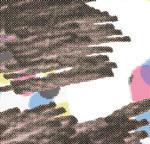

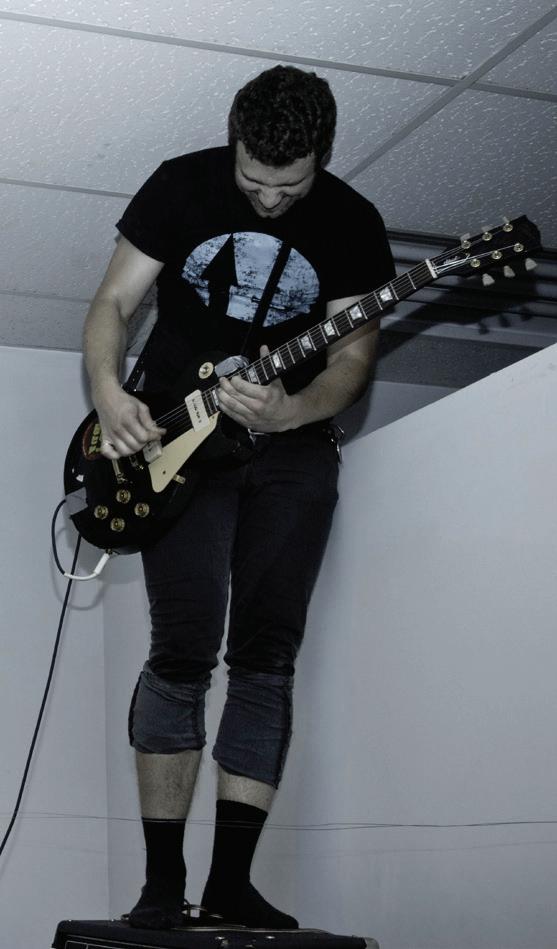

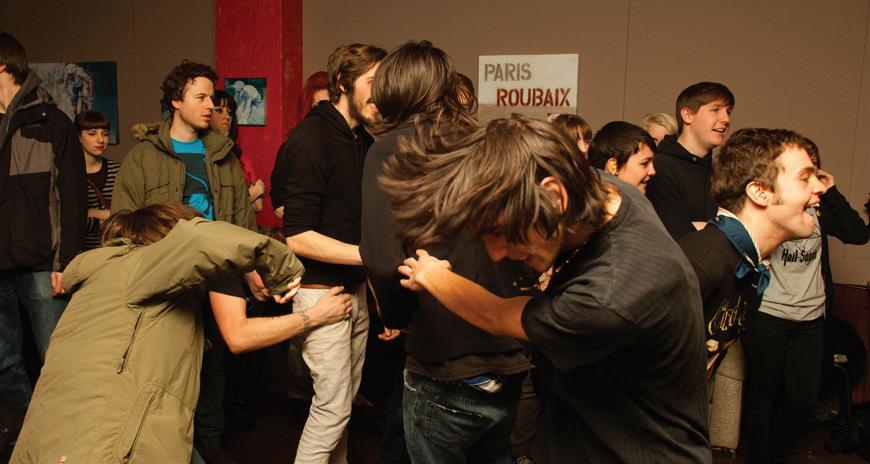
It's a genre of music, a philosophy, a DIY ethos, and a way of life all rolled into one. It is something that empowers the marginalized, oppressed, and working class, so that they can have a voice; a voice that is loud, proud, and doesn't give a damn about all who oppose."
NASR "'Punk' is cultural expression of an otherwise anti-oppressive worldview and ideology. While the punk aesthetic and musical output have overwhelmingly been commercialized and commodified, it doesnt negate the fact that on a base level, it is still rooted in a righteous anger against injustice and suppression of regular people. Punk is for the people and today, punk should be specifically anticapitalist."
SCOTT (FRANK DUX/BAD EGG/PINK LEMONADE RECORDS): "Punk is a way to live your life. Whether it be through the music or the DIY lifestyle. Live your truth with integrity and respect for all walks of life. You're never to cool to CARE."
"FAST EDDIE KNOWLTON (DEBT CEMETARY): "Punk isn't anything specific, it's more of a feeling. This feeling can come from a variety of different things including but not limited to: music, ideals, fashion, hobbies (ie: professional wresting, collecting vinyl) and everything else that offers a different choice from the current social norms of the time. The "DIY" ethos that the counter-culture has adapted actually isn't anything new but what's special about the "punk DIY ethos" is that it's rooted in community and not just a "do it yourself for yourself" but a "do it yourself for the collective good"... and that is punk as fuck."
EDDIE STANNARD (THE GREEN ROOM BARBERSHOP):
"To me punk isn’t a genre or an aesthetic but more of a community. Likeminded people creating art, subcultures and paying homage to traditions. It’s a bit of grit and an eagerness to create. As get older and start to become more of a “back of the room guy” it excites me to see the next generation getting started and doing it better than we ever could."
MEGHAN DONOVAN "I think it can be easy to write punk off as a genre of music for the average person. The term evokes cliches of 80's studded leather jackets, liberty spikes, stale beer and grimey venues. It's certainly no secret that it attracts people from the edges of society, individuals that feel overlooked and largely unsatisfied by prospects of white picket fences and decades of 9-5 grind.
At its heart, I believe it's always been about the need for a real community. People coming together to support each other in struggles and passions, pushing to create radical change for future generations.
The idea that we can Do-it-Together has become a powerful ethos that has pushed the punk counter culture far beyond simply a genre of music, bleeding into art, fashion, politics and mainstream media."

ANONYMOUS "Fuck you. Punk is both an artistic expression and an ethos, anti establishment, pro humanity."
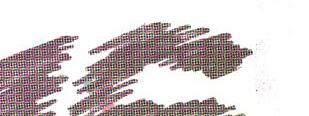


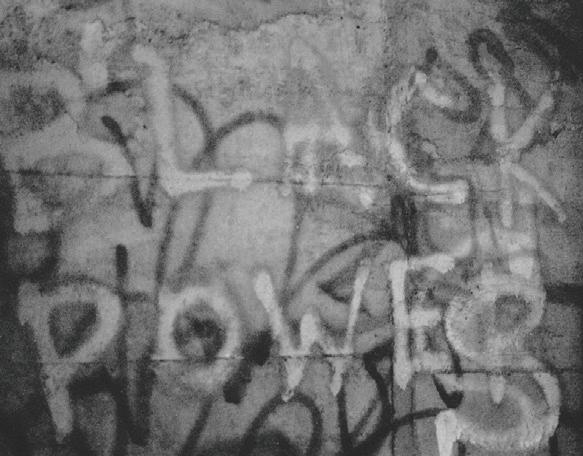

It can be all of these things and none depending on who you speak to. To me it is goes beyond an ethos or even a set community. It can be dressed up or down in different ways but ultimately it is a state of mind and being. In loose terms it is a yoga of sorts, a detachment of judgment from the outside world and an impartiality to preference. It is to be mailable and capable of adaption even when we wish for things not to change. An acceptance of the absurdity and beauty of the world while taking accountability for the physical space we inhabit is punk. Punk to me is an awareness that we are all different, we may not agree in all things and that is alright insofar as we are not stepping each other down. I believe it to be pushing forward for the sake of finding something new, for better or worse, and accepting fully the fruits and spoils of those actions. Punk is to create for the sake of creation, to protect what we deem important or sacred and to unapologetically show up as yourself as often as you can and in doing so, fostering and caring for those who exist within the communities you find yourself in."
It’s a friday night, percussive blasts punctuate the shouting between friends. Beer is bought and shared, as are cigarettes and joints. The wall of sound is almost deafening and the sheer talent of the people you know is very impressive.

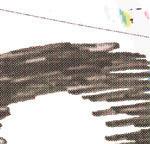
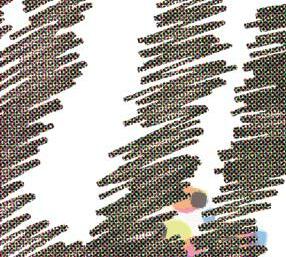



The workweek is just a bridge to the weekend, where the revelry happens again. Loudly and proudly we wage war on the peace and quiet of our sometimes desperate lives.
The music sparks adrenaline, anger, frustration, pain, grief, sorrow and sometimes it is just noise. Beautiful, dissonant, discordant noise. The sets are over, but the revelry is not. The night does not fade away. Instead, my friends and I retreat to a jam hall, which is a home away from home for musicians to practice and hang out. We party, we drink, we muse and we think.
Having to spend time away from these places can be indescribable to non-musicians, but I can say it is painful and depressing to many of my fellow musicians.
The camaraderie of the group is somewhere between diehard and inseparable. Learning music can be like a trade in that older and more skilled players will teach the less experienced techniques and playing styles. The jam hall and the weekend concerts we play embed and strengthen our friendships and playing abilities.
It has been almost two years since I last saw an in-person—living—music





performance. I am a staunch music lover and metal head, and life without live music has not been the same—it feels tiring, boring and bland. Life has felt empty since the silencing of the drums. The rush of melody and soaring solos, the ebb and flow of bass tones backing the crunchy riffs punctuated by the screams and warbles of an energetic or eclectic singer.
MUSIC IS A HAVEN FOR PEOPLE WHO ARE PART OF MARGINALIZED COMMUNITIES...


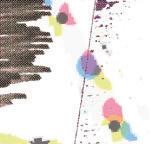

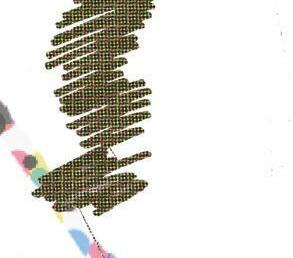
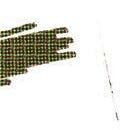
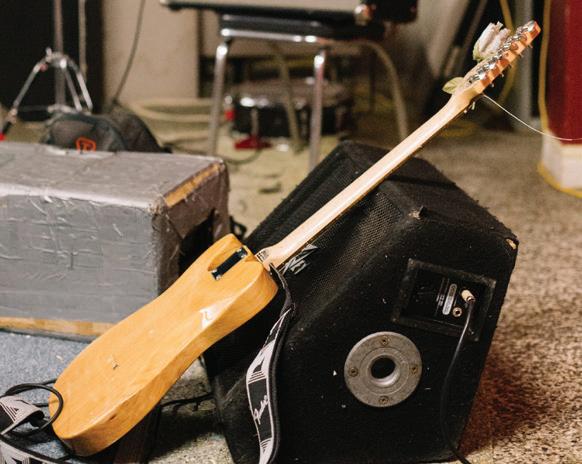

I long for the return of live music but the venues which music can be played at are vanishing. Chainsaw is gone, as is Starlight. The Boathouse turned the metal and rock community out, shifting their focus to strictly acoustic music.
The list of venues shortens and the response from the city and larger government entities seem indifferent, if not negligent, of the issue. Music is important to more than just me—it is important to all cities that host live music at venues. Music helps people of all ages find acceptance. Studies show that social gatherings are good for people's well being as they enhance feelings of community.
Music is a haven for people who are part of marginalized communities, who feel unsupported in their daily lives but have secure friendships through the community of music. The jam hall only exists to provide practice space, and without places to play shows, a practice space becomes irrelevant. Without proper venues for entertainment people, businesses, and the community will suffer a loss. Ironic that the loudest of us will fade out in a manner so quiet and sinister. These venues don’t just host my friends and I—they host cultural acts, hip hop acts, comedy routines and many more. They serve as an experiential stepping stone for people pursuing a career related to music or audio engineering.
Our society decided a long time ago that good food goes with good drink and good company. When we all gather, we go to places like pubs and bars, and I don't know about you, but I prefer the pubs and bars that have musical acts. One thing the pandemic taught me is to keep close that which you hold dear.
For me, there are many things that fit into that category, as I'm sure is the case for most people and I include live music venues as dear to me—keep their well being close to heart and contact your ward councilor and local members of parliament to invest in communities by assuring venues for musical performers will continue to exist and be accessible.
WORDS BY ZACHARY STRONGE • PHOTOS BY ERIK O'NEILL & PAIGE BUSH
AN ODE TO LIVE MUSIC
KURTIS
RIDEOUT SEARCHES FOR AN ANSWER TO THE AGE OLD QUESTION
J.I.C.B: "Punk is ill defined because of its expansive use in the vernacular. Is it punk rock? Is it an attitude? Is it aesthetic?
“ ”
MANA BEHZAD GRAPHIC
ON TALKING TO EACH OTHER
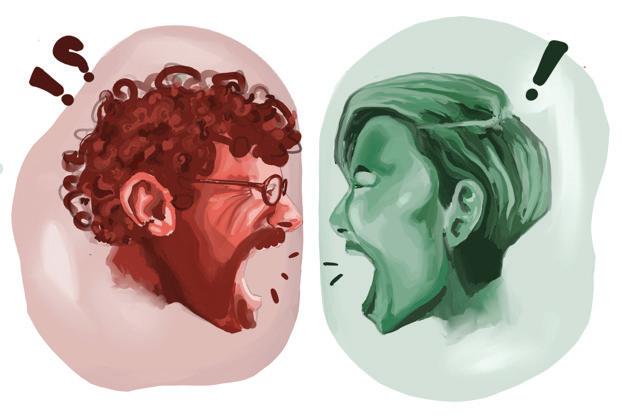
the world.
opinions and then responded with careful consideration. They expressed their deeply-held passions and concerns, and, impressively, waited patiently to hear the concerns of others around them.
DEYANNE SUTCLIFFE CONTRIBUTOR
It was a bizarre series of events that launched me into politics during my second year at school. Perhaps you are familiar with the chaos surrounding Lindsay Shepherd, and the controversy at WLU after Shepherd showed a controversial video in a class for which she was a TA. The climate on campus was intense and, as the story spread, people couldn’t help but pick sides. Those who defended Shepherd, those who opposed her and everyone else who didn’t know enough to form a proper opinion on the matter walked on eggshells for several weeks.
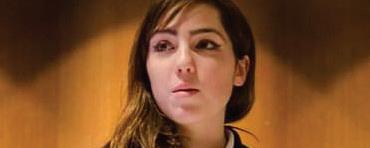
On occasion, someone would say something to oppose Shepherd and others would respond by promptly shutting that individual down. Other times, someone would defend Shepherd and a crowd would quickly silence them.
WLU became an ideological minefield and tensions rose. They boiled over at a speech held by Shepherd, which quickly drew media attention.
Curiosity got the best of me, and I couldn’t resist attending a rally at which Shepherd was scheduled to speak on the matter.
Surprisingly, one of the most interesting occurrences at this event had nothing to do with politics or any of the hot button issues of the day. Instead, it had to do with the way people organize and how they overcome division.
Of course, there were attendees defending Shepherd and others criticizing her. Then, to the side, there was a reporter interviewing the most peculiar group. This group was composed of people who approved of Shepherd’s stance as well as those who disapproved.
Much to my surprise, I heard as they engaged in a debate about the entire situation. They took time to ask one another difficult, prying questions; they paused to think through their
After weeks of rising tensions and people holding their breath, I was surprised to see that there were some willing to engage in a long, deep conversation.
I don’t know that anyone who left changed their mind. What I did see, however, was two groups of people who started at odds with each other and left with a mutual respect—even if their opinions remained distinctly opposite.
In the past few years, and especially during the pandemic, we’ve seen people split over countless social fault lines. Like many Canadians, I watched as neighbours turned on each other and social discourse turned ugly. And, like many Canadians, I wondered what we’re headed to, if there’s a way to reverse all of this.
I keep going back to the crowd on the grass field just outside the school, and what it means for the rest of us.
I understand that some people’s beliefs were deeply-held convictions, the sort of principles that help them define and navigate the world.
Because of how central these beliefs are to how we operate in society, people are naturally-inclined to protect them fiercely. As a result, there are certain things we are too passionate about to discuss calmly.
I know that fear can run deep, especially when there’s so much unknown, and it can be overwhelming.
I know that when someone else’s ideological position is depicted as a risk, it’s hard to see them as anything other than that. And I know that under those conditions, it’s most natural to lash out as a defensive mechanism.
I also know that it’s not easy to rise above these obstacles because, as humans, we are prone to tribalism.
What those students did, though, gave me hope.
It doesn’t mean that anyone’s opinion changed. What had changed, however, was how they perceived the other side of the conversation. They learned how someone else might see
And this can be scary. We’ve been conditioned to be afraid of certain opinions—and, to be fair, there are certain ideologies that are flat-out dangerous. The reality though, is that despite media sensationalism, most people are just people一people with bizarre or even controversial views, but still regular people with regular hopes and regular fears. Not nazis, not communists and not the next Jim or Alex Jones一just people.
It’s something we can appreciate when we have a conversation, learn where someone else is coming from, and commit to seeing them as a person, no matter how weird or misguided or bizarre we might think they are.
As I think about the world we live in, I become more convinced that this is the way we build bridges and reverse the polarization we’ve created and endured. To speak to another person, to hear their side of the story, and to reserve our bias are things that don’t always come naturally.
However, the beautiful thing is that it is possible. When we engage in these conversations, we may discover a way of thinking about the world that we’d never even imagine on our own. We might learn a new way to interact with nature, to relate to hardship or to improve our spiritual and physical health. We might connect to perspectives we’ve never thought of before or increase our understanding of perspectives we already have.
We might discover that someone’s oppositional opinion has been deeply and carefully thought out, even if we don’t agree with their conclusion. What’s most important, though, is we might discover that we have far more in common with one another than we often think.
Politics aside, we have families, friends, dreams and aspirations, fears and hopes. There are areas in our life where we are strong, and others where we need support from our community. There are things that we can bring to the table that no one else can.
And when we can look past a political fracture, there is literally nothing that can hold us back.
10NOVEMBER 2021 // COMMUNITYEDITION.CA
TAKE MENTAL HEALTH SERIOUSLY AND THRIVE
my one-on-one time with students is directly or indirectly related to mental and social health issues—much more than previously in Germany.
ALTAY COSKUN
Oct. 10 was World Mental Health Day. From the many themes we are encouraged to take note of or to remember throughout the year, this is one of those few I embrace. The University of Waterloo has even announced the celebration of Thrive Month from Oct. 18 to Nov. 12, which marks a new step of public awareness to a pervasive problem.
Some may say that this is an unlikely choice for me: I have been performing highly for decades, have been successful in taking good care of my children (admittedly, most credit should go to my wife) and I typically seek balance in my life. I have never asked for professional mental health support to come to grips with anxieties or depression. In short, I have been doing quite well. But I do not take this for granted. I am fully aware that this can change anytime.
Some of my uncles had drinking problems, one of them even ending his life before I got a chance to meet him. I often wonder what their experience in World War II did to them, but I shall never know because we barely talked about it.
My dad was wild and fearless for most of his life but in his fifties much of the darkness of his childhood caught up with him in his nightmares and forced him into early retirement; he was diagnosed and fired, but never treated. From the large crowd of my cousins and siblings, most were able to work towards a ‘decent’ life but many of them never explored their potential due to the pain they keep buried inside. I can only speculate about the demons that are haunting them.
Mental health problems are a reality and they are so in my immediate environment.
The 1990s were transformative for me. Having just entered my 20s, I had to confront reality as a young grown-up. So many people near me happened to have their breakdowns, some knocked out for months, others suffering for years or even the rest of their lives.
This was back in Germany, but I started seeing similar signs nearly everywhere I went. Not that I made it my quest to diagnose people with mental health challenges, but I have the impression that intellectual or moralizing categories are insufficient to explain a certain action (or inaction). What might seem to be an unpleasant or dysfunctional temporary mood to the superficial gaze often appears to me as an underlying mental health condition. When I moved to Canada in 2009, I thought that the overall social and mental health situation was better here than in Europe. Canadians put a lot of emphasis on respect, diversity and inclusiveness, at so many levels of the social, political and educational system.
It took some time for me to become aware of the open wounds of Canada’s colonial past and the impact on First Nations’ precarious mental health situation; it was easy to just ignore these in an affluent Waterloo environment. Irrespective of this problem, I quickly saw many of my students were struggling and mental and social instability were important factors. Between a third and half of
Initially, my perception was only anecdotal, though it became a recurring pattern in my professional life, and I gradually found data that underpinned my assessment. The whole nation was shocked about the Woodstock Suicide Crisis that took the lives of five highschoolers early in 2016. Based on data up to 2016, the Government of Canada website states that suicide is the second-most frequent cause of death among youth and young adults; it occurs three times as often among born Canadians as among immigrants. Thanks to the increased attention to this national (and global) emergency, the government of Ontario, local school boards and universities have stepped up their commitment to provide material resources in the fight against mental health problems. Despite such noteworthy improvements, youth suicide is still at a dauntingly high level.
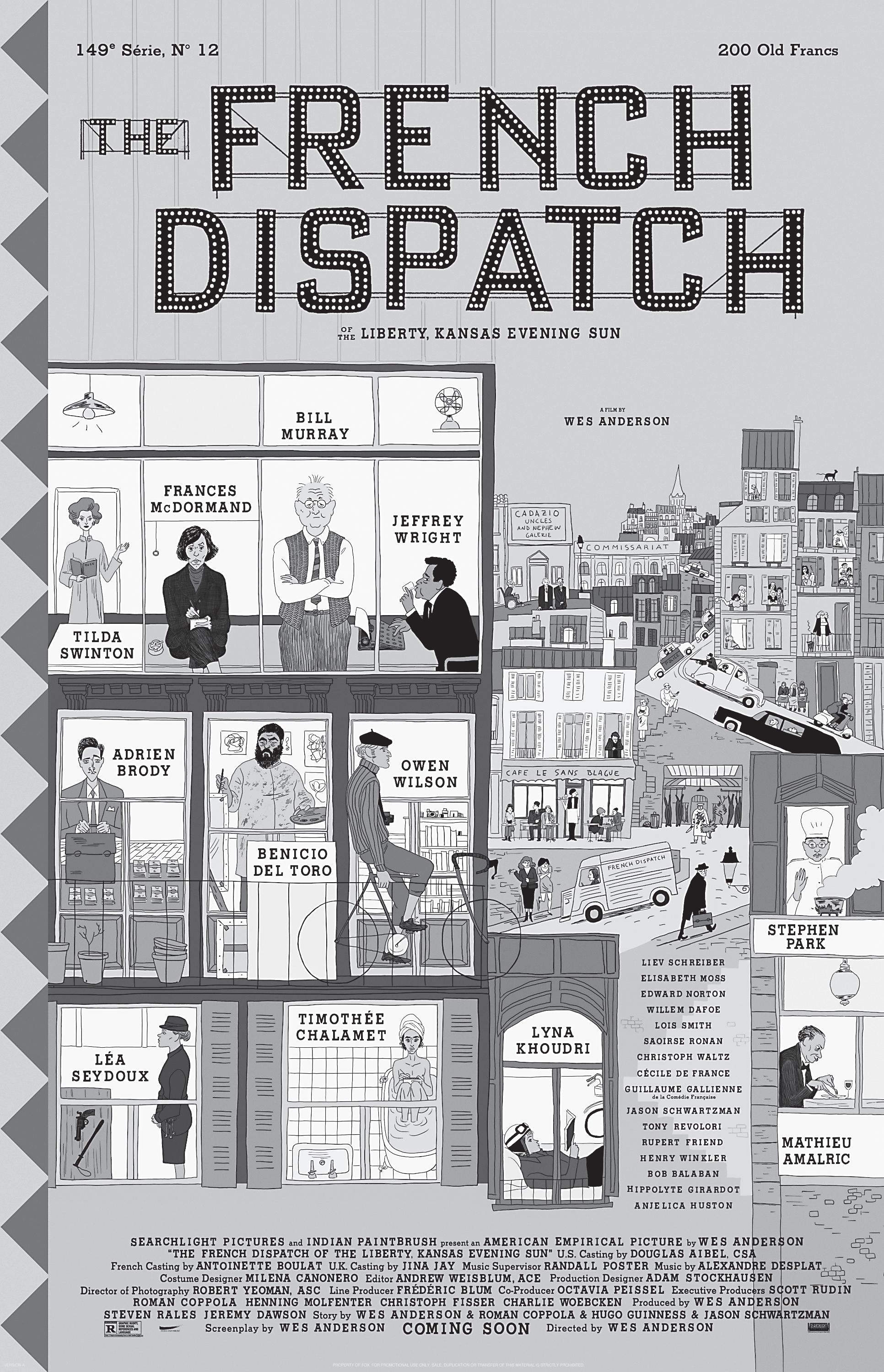
Obviously, there is no easy fix for the deeply rooted problems in our modern and globalized Canadian society. They won’t go away if we continue pretending that there is a mental health problem of individuals rather than of our society as a whole. We are indeed facing a true pandemic, not only in terms of the death toll.
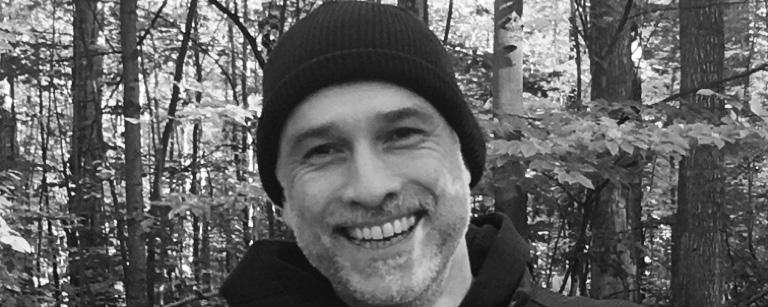
Small wonder that I feel attached to an initiative by UW Campus Wellness. Its organizers give out yellowT-shirts that exhort us to “Thrive”, “Building Positive Mental Health for All”. The celebration of Mental Health Wellness Day” (or week, or month) has been recurring for many years now. I first took note of it in 2013, perhaps not coincidentally, because that was the year I had the fiercest struggles with negativity I could not easily shake off myself. Becoming one of the yellow waves that were flooding our campus was truly energizing for me.
The yellow T-shirts highlighted a different motto, raising awareness for the “1 in 5” Canadians affected by mental illness. The number itself even appeared as an understatement to me, while still being remarkably high for an official count. I was struck much more by the two words printed underneath: “ASK ME”. This I found truly bold, quite unexpected in our expertocracy in which we are advised to swiftly direct people in need to those who have a diploma for dealing with their specific concerns. Would I become an expert of mental health by putting on this T-shirt? No, certainly not!
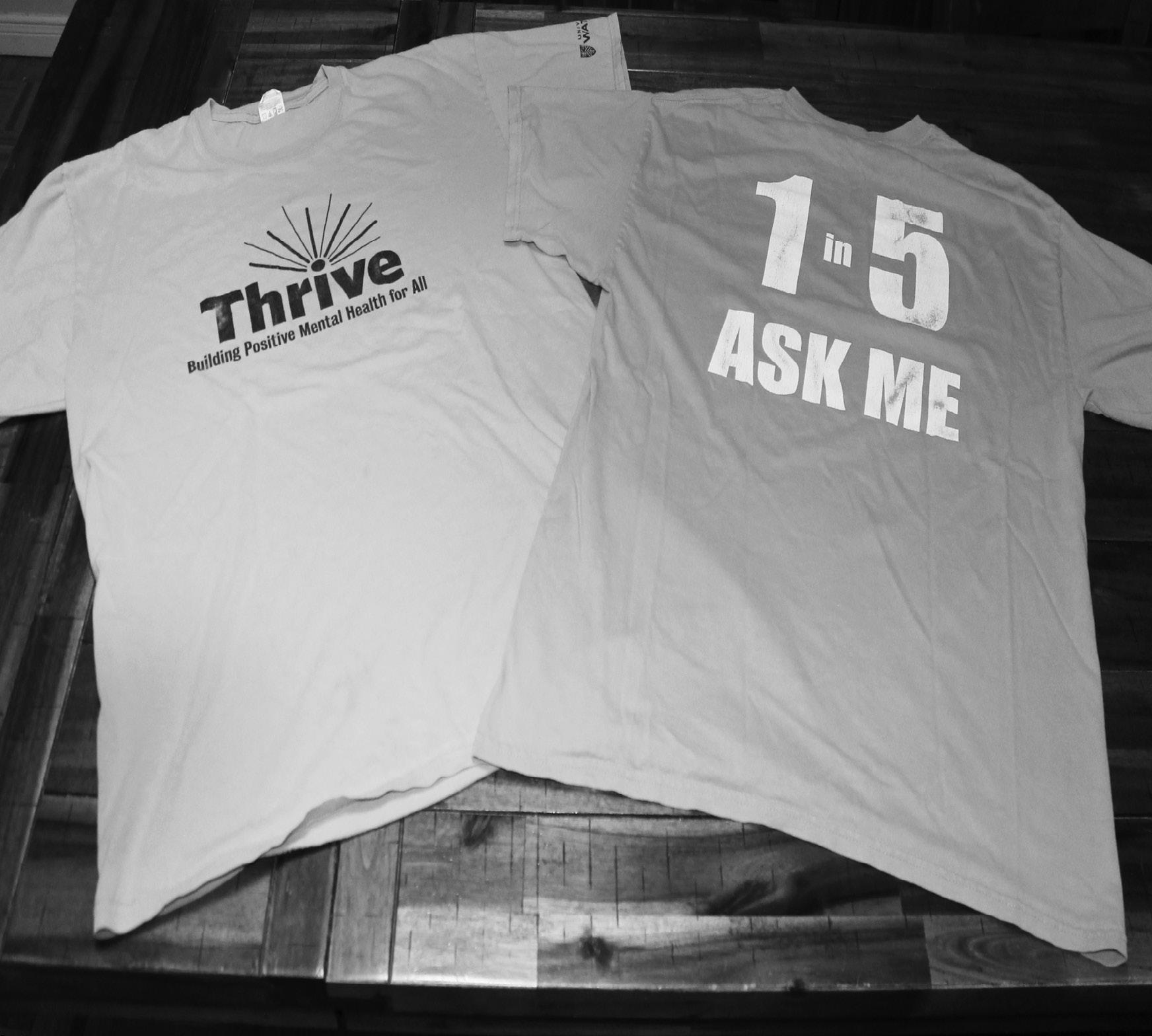
Me posing as a trained counsellor going by the book is not what my students expect—or want. Many of them already know the professional script that often did not work for them. They appreciate a compassionate listener and I sometimes surprise them by sharing my own personal experience if their story brings it up in me. In such situations, we are no longer sitting together as prof and student, but are facing each other human to human. For sure, this is unprofessional and entails some risks, but is it not what being human is about? Taking risks for the good that we strive for?
Wearing the yellow T-shirt gives me courage to tell my story and given me more opportunities to listen to others’ stories. Every story told can be inspiring hope or unveiling demons, making them more palatable and one day hopefully manageable. All are invited to join, by wearing yellow, by listening, by telling their own stories.
NOVEMBER 2021 // COMMUNITYEDITION.CA 11
NOW PLAYING PRINCESS TWIN PRINCESSCINEMAS.COM
O CANADA
COLUMNIST
From Oct. 18 to Nov. 12, UW is observing Thrive Month where they focus on mental health.
ALTAY COSKUN PHOTO
H. TOOTH COLUMNIST
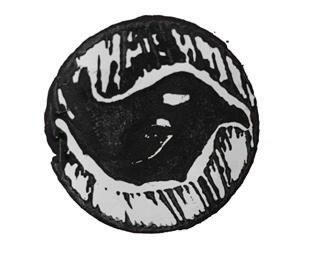
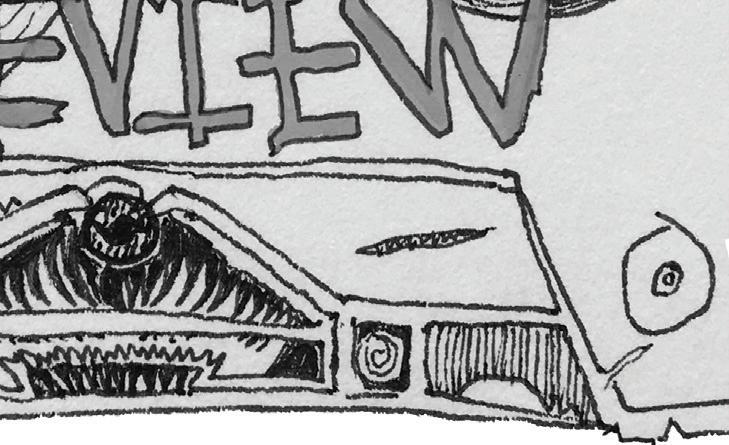
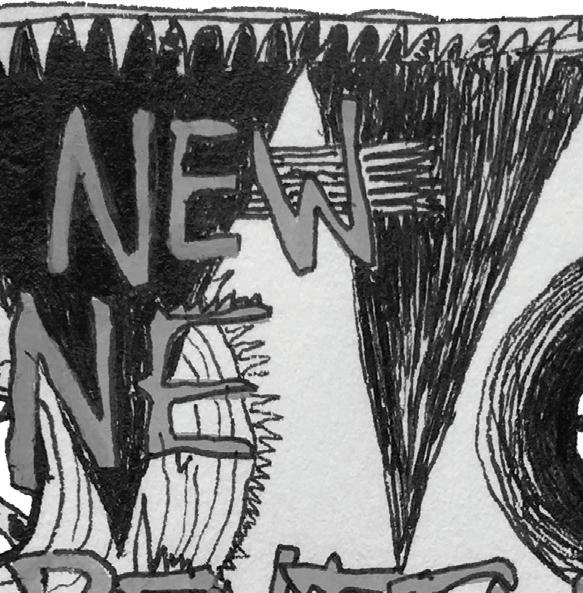
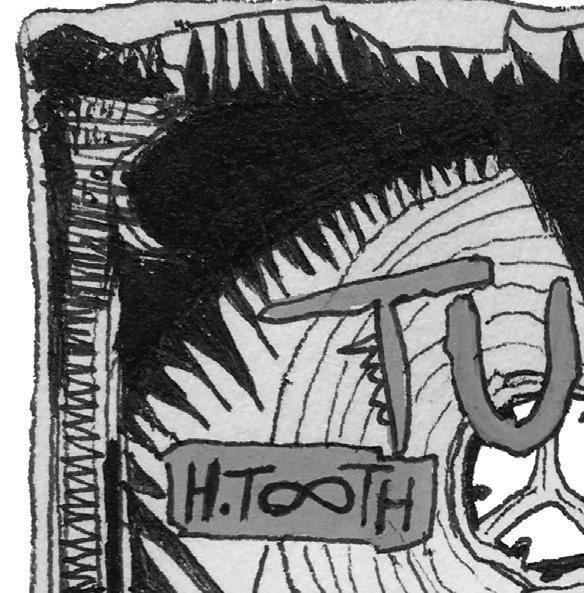
Ground of Being’s debut EP Persona (2021) is ethereal death metal stripped of human form. Musical collaborators
Thomas Vokes and Alfred Vienneau denote the eroding, alchemic forestry of transmutation and self-deceit. They reveal the cyclical conformation of our unexamined permanence while exploring the concepts of self, soul and ego. Through their introductory tryptic, Ground of Being demonstrates their ability to balance technical
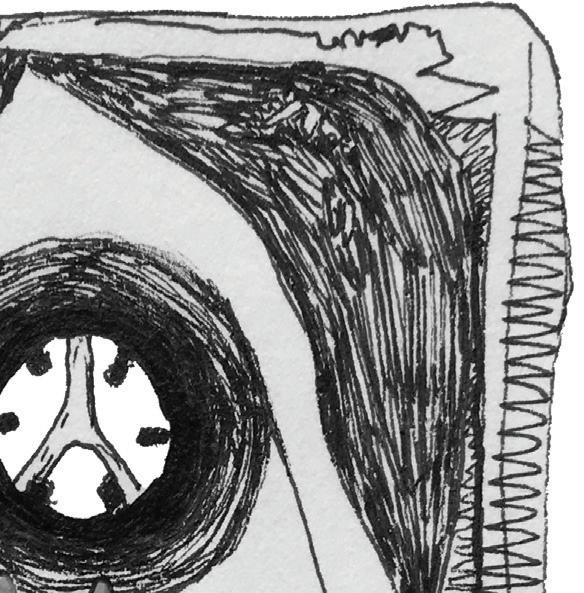
aptness without limiting emotional spontaneity.
Persona slips from its mask of postdeath dissonance to breathe a quel of lamenting, synth-laden shoegaze. Dense, hypnotic refrains disregard the constraints of melodic rule, inciting a discordant reprisal. Conflicting notes abandon hope of resolve. A polyrhythmic deluge of colossal proportions reigns supreme over the subservient jangle of invented chords.
As ancient melodies slip from the whirlwind of chaotic ritual, a merciful interlude of lush and benevolent synths calms the air. A melodic theme returns to challenge our vulnerability with a defiant, cross-rhythmic spell.
Persona always moves forward, curtailing its obscure and mystifying energy with captivating, post-rock intervals and ambient noise. Violent
drum-breaks sound with unrelenting speed and fervor whilst lashing guitars chime as brightly as they burn.
Droning synths and manipulated samples echo into the otherworldly frontier of a desolate intermission.
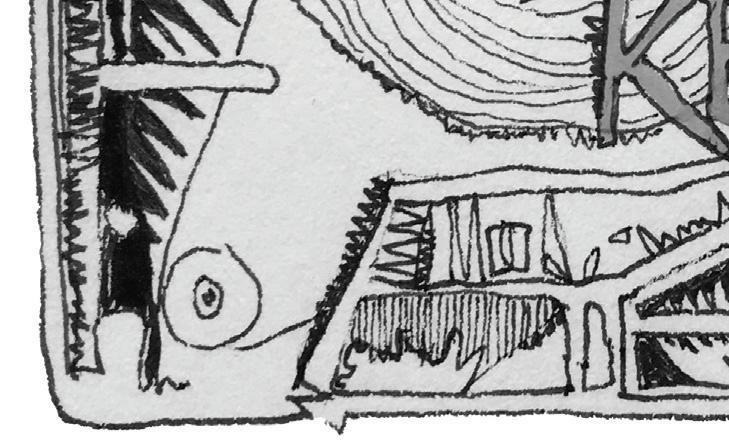
A somnolent ode serves to lull a formless element from spinning completely out of control.
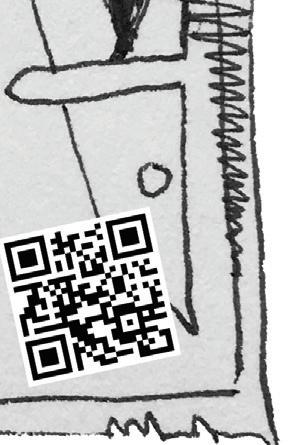
These compositions effectively scrutinize genre and form while exhibiting a profound respect for execution and craft. Ground of Being’s Persona serves to delineate a codex of metaphoric abstractions wherein the artist’s rationale unfolds from conception to culmination, ad infinitum.
Associated Acts: Paul Masvidal
Genres: Death Metal, Post-Metal, Post-Rock, Shoegaze, Instrumental, Ambient
DRAG SHOW COMES BACK TO SCHOOL
ADRIAN QUIJNO EDITORIAL ASSISTANT
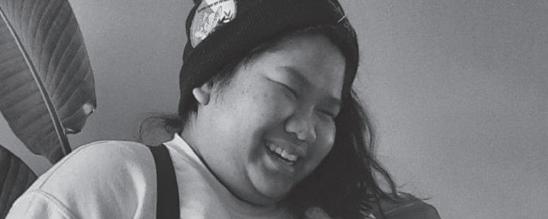
UW’s Mathematics 3 building was the home of UW Drag Club’s first in-person drag show since lockdown started.
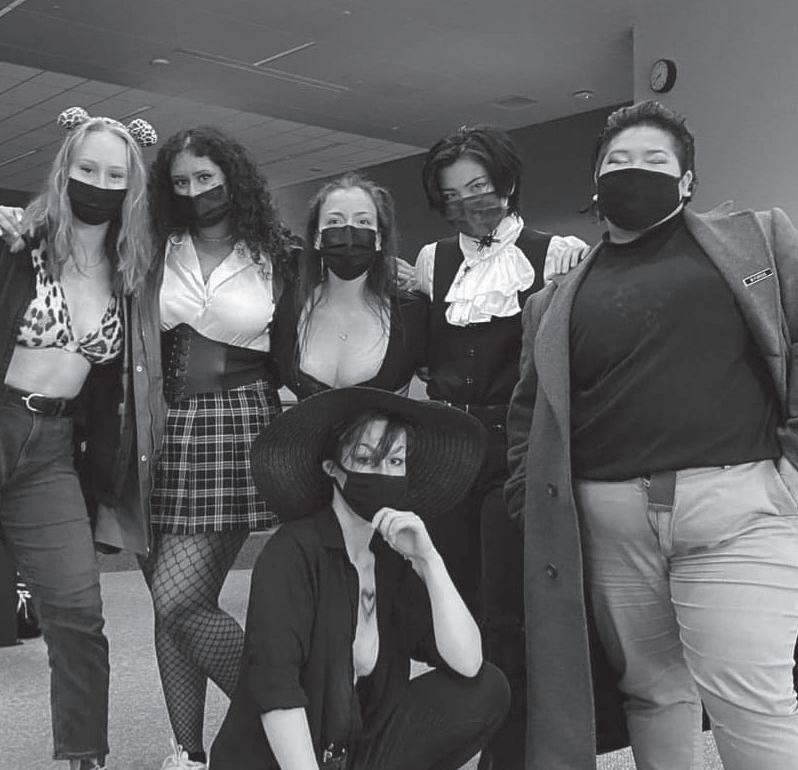
This Halloween-themed drag show on Oct. 29 was a welcome reprise of the beloved club and their fans, although there was limited capacity due to COVID restrictions. Chloe Acton, Drag Club president, performed alongside the troupe of local drag monarchs. In an interview, Acton spoke about how COVID-19 affected her as a drag performer and the Waterloo queer scene as a whole.
“COVID has given me time to improve my craft and think about what direction I want to go in. There was plenty of time to think of and gather items for new outfits, songs, and performances.” Acton said.
She performs as Aria Arachne, and has been doing so for the past 3 years. Most of Drag Club’s activities since the pandemic started have been hosted virtually and run by the club’s executive team. Events include makeup tutorial nights, watch parties of RuPaul’s Drag Race, and game nights that would occur weekly. Being able to perform in person however was always the most coveted club activity. When asked how it felt to perform after almost 2 years, Acton said;
“It was a little scary but it didn’t feel
any worse than usual. If anything, it was a little less worrisome since the audience was just happy to be there after so long. COVID didn’t particularly have a huge personal impact on performing for me.” Acton and her team of Drag Club executives started planning this show in the beginning of October. “It was a bit stressful with all the new rules for health and safety. But luckily it all came together nicely in the end.” said Acton.
The night also marked a first for performer Susan Birch, also known as, Steven Adams. Birch made her drag debut during Friday’s show and was excited to tell the Community Edition how itall went. “This past performance was my first time ever doing drag, so COVID-19 hasn’t had an impact on that aspect of my life. I started watching RuPaul’s drag race during last year’s lockdown, which inspired me to do drag. If it wasn’t for the pandemic I don’t think I would have found drag until later in life. It was hectic for me to plan the show because I am a perfectionist. I had a vision for what I wanted to do and how I wanted to achieve it. It was stressful but I love performing and have a ton of crazy ideas for the future.” Birch said.
NOVEMBER 2021 // COMMUNITYEDITION.CA 12
UW
Drag
Club returned
to
in-person
shows last week. ADRIAN QUIJANO PHOTO
TRAINING WON’T SAVE BLACK PEOPLE IN CRISIS
However there is little evidence that this type of training would have any tangible results. In 2019, a metaanalysis of 492 studies in the Journal of Personality and Social Psychology was conducted.
from their communities.
able to facilitate for Omer.
PHI DOAN AND FITSUM AREGUY CONTRIBUTOR
Though the long-term impacts are still unfolding as the pandemic tapers off, mental health professionals have been sounding the alarm about the silent pandemic for over a year. The disruption and uncertainty around the pandemic have led to increasing rates of social isolation, anxiety, depression, as well as substance and alcohol abuse.
This elevated risk holds true for Black people facing mental health challenges in Waterloo Region. On July 5, 2020, 15 Waterloo Regional Police Services (WRPS) officers descended on Abidisalam Omer, a Black Somali man with a documented history of mental illness.
Security footage of the arrest shows multiple officers with guns drawn surrounding Omer who sat in his parked car. Suspecting that he had a gun, they broke his car window, dragged him out, and held him down while one officer punched him repeatedly.
Earlier that month, Waterloo Regional Police Chief Bryan Larkin was featured in an episode of TrueNorth TV, the media apparatus for Waterloo-based tech start-up incubator Communitech to respond to the crisis of police legitimacy in the wake of the Black Lives Matter movement. Larkin mentioned WRPS’s Equity, Inclusion and Diversity (EID) unit.
That strategic plan had officers undergo anti-Black racism and antiracism training. It represents the more substantive piece of its EID strategic plan that also includes an HR initiative to ensure a diverse workforce and leadership.
“We welcome that dialogue in those conversations because I think in the end, people see that we’re trying to make a difference,” Eric Boynton, sergeant in the EID Unit, said. “Although it’s a marathon, and we’re making steps in the right direction.”
“Our findings suggest that changes in implicit measures are possible, but those changes do not necessarily translate into changes in explicit measures or behaviour,” the paper’s authors wrote. “Implicit measures can be changed, nut effects are often relatively weak.”
For members of the force that fail to grasp the training, Boynton said there are procedures in place.
“We do have our professional standards unit that will look into it, and if there’s any concerns in the community about police officers conduct that can be directed to the [Office of the Independent Police Review Director] or complaints can be made with our service as well, so that’s how we would handle that,” Cst. Johnson said.
In the months following Omer’s arrest, two investigations into the Waterloo police officers use of force in his violent arrest resulted in a finding that the force used was “reasonable, appropriate and lawful.”
Regional police held a meeting with the local Somali community, who were traumatized by Omer’s arrest. When the results of the investigations were presented earlier this year, Omer became “the individual”—nameless and stripped of his humanity.
In her lecture, “What’s wrong with Black folk? Trauma, Black psychiatrized madness, and the state’s response,” Idil Abdillahi, assistant professor at Ryerson University, touched on the language used by police which is harmful to Black people.
“The language of care camouflages the systems of containment that pathologize, criminalize, incarcerate, and otherwise harm Black people in Ontario,” Abdillahi said.
Abdillahi used the term ‘service deserts’ to refer to the “isolated and inaccessible communities outside of [downtown cores], which function as sites that reproduce social, emotional, economic, spatial and visible isolation.” In addition, people that live with mental health issues are excluded
“Mental health struggles, or madness, is marked by disposability and psychiatrized mad Black people are particularly vulnerable to death across a range of contexts that places [them] in extremely vulnerable circumstances. Often psychiatrized mad Black people are evicted from Black communities … their outsider status is fueled both by their condition, the response to their condition, and their Blackness,” Abdillahi said.
In Waterloo Region, these service deserts exist in the pockets of neighbourhoods where more low-income, Black and immigrant communities live. These are the same communities that were hit hard by both the first and second waves of COVID-19.
Laura Mae Lindo, MPP for Kitchener Centre, said that when police suddenly pull out of neighbourhoods, like they did in Victoria Hills where Omer lives, without ensuring there is something else to fill the vacuum they have created, the community feels the brunt of this burden.
“What I’m worried about is that the community will start to feel intense guilt and shame that they weren’t able to do more. And it’s not their place to do that. They’ve done everything that they can, they’re asking and pleading for help, and they also deserve to feel safe,” Lindo said.
Victoria Hills resident Omar Said said that even though he was a longtime friend of Omer, he and Omer had split up over an argument.
“The fact that they don’t feel safe isn’t because there’s something wrong with Mr Omer,” Lindo said.”It’s because the whole system has let him and the community down.”
Larkin promised the Somali community that the WRPS would work closely with correctional services and other systems to ensure Omer would get the support he needs. Yet, Said could not confidently say that he saw those supports materialize.
“No, they never support him. I haven’t seen it,” Said said. “I don’t know where he sleeps, I don’t know what happens.”

WRPS did not return insideWaterloo’s request for comment on what kinds of support they were
“The police aren’t responding to calls about him anymore,” Said commented, “and when they do respond, they often look the other way.”
By failing to ensure that culturally appropriate mental health supports were available for Omer while simultaneously ignoring calls concerning Omer’s behaviours, the WRPS effectively isolated Omer from his own community. Laura Mae Lindo, who is also the NDP critic for antiracism, colleges and universities, said this approach is consistent with how their system operates.
“From the minute they decided, on their own, that they needed subject matter experts to review Omer’s arrest, and those subject matter experts were police because it’s only about use of force, they stopped caring about Mr. Omer,” Lindo said.
“And as soon as you stop caring about Mr. Omer, you’re not trying to make sure that mental health practitioners are providing him with the care that he needs. You’re not making sure that you’re dealing with the root causes of whatever he’s dealing with, and you’re leaving the community in a horrid position where the lack of care for Mr. Omer is becoming dangerous in and of itself.”
Larkin has acknowledged in the past that officers should not be the ones responding to mental health calls. However, that hasn’t resulted in any significant changes to how the force approaches these situations. The EID unit serves to present a friendly and progressive face to the WRPS, but fails to acknowledge the intersection of race and access to mental health supports.
Looking over past incidents and data, Black residents were still found to be overrepresented in officers’ intelligence notes; as well as overrepresented in the number of use of force incidents. The stats around intelligence notes follows the similar pattern of carding years ago, which WRPS have stated they would have academics analyze the data as to why. Meanwhile, WRPS have defended themselves around use-offorce by noting that they only began collecting this data recently, and that their second quarter report showed a decline in incidents.
The Waterloo Region Record reported that since 2007, Waterloo Region police officers have shot seven people. Trevor Graham (26) and Beau Baker (20) were fatally shot. Both had documented mental health challenges. Most recently, an unnamed Black youth struggling with mental health issues was shot by Waterloo police.
Despite all this, WRPS have been reluctant to make any real changes that would see funding taken away from the service and put towards solutions that actually address the root of the problem, thus ensuring the police end up as first point of contact in situations they have admitted to having no expertise in.
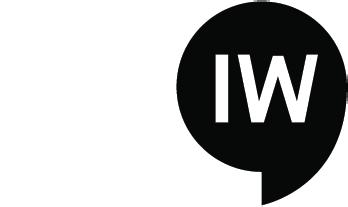
Following a rash of violent incidents in the US and Canada last year, the federal government began funding pilot programs for body worn cameras, despite lack of consistent evidence showing that they reduce police brutality. When the pandemic forced the Region of Waterloo to reduce their budgets for the year, WRPS still fought back for a $8 million increase before settling for $5 million, only to later find savings amounting to $3 million.
“There is no other area that I can think of where we would give money to an organisation who does not have expertise to do work in that particular area,” Lindo said. “So, we have local police officers, including Chief Larkin, who say ‘we don’t want to respond to these calls, we are forced to because somebody calls 9/11 and there’s no other option.’”
Larkin recently announced that the WRPS was looking into adopting a new triage system for 9/11 calls, reiterating a talking point used in 2020 during meetings with the Somali community following Omer’s arrest last year.
He also said he will advocate for legislative change under the Mental Health Act to “allow other services— like paramedics—to apprehend someone experiencing a mental health or addictions related crisis.” WRPS did not return insideWaterloo’s request for details regarding how and when the triage system will be implemented.
The ACB Network and ReAllocateWR are local groups who have long advocated for culturally responsive mental health supports to supplant police.
13NOVEMBER 2021 // COMMUNITYEDITION.CA
TIM MOSSHOLDER CONTRIBUTED PHOTO
INSIDEWATERLOO
USE
OF
EDI TRAINING AND PROGRESSIVE LANGUAGE DOES NOT ADDRESS MENTAL HEALTH NEEDS OF THE BLACK
COMMUNITY
LISTINGS EVENT
THURSDAY, NOVEMBER 4
JEREMY SKOZA LIVE REVIVE GAME BAR
WE’VE HAND SELECTED
SUNDAY, NOVEMBER 7
TRIVIA NIGHT GAMES ON TAP
Come and rock out at Revive for a night of music, fun and of course ... old school video games. The music starts and 10:00 p.m. and it’s supposed to end at 1:00 p.m. but that really depends on how much fun everybody is having when the time comes.
Trivia aficionados will be able to test their knowledge at Games on Tap Board Game Cafe. The event starts at 8 p.m. with a suggested arrival time of 7-7:30 p.m. Reservations are required and can be made on their website. Current COVID-19 protocols are being taken so participants can enjoy their games and drinks safely.
Trivia • FREE • 8:00pm–10:00pm
Music • 10:00 pm
THURSDAY, NOVEMBER 4
DISNEY TRIVIA CROSSROADS BOARDGAME CAFE
Calling all fans of Disney! The Crossroads Board Game Cafe will be running a Disney-themed trivia night this month. As spaces are limited, participants are encouraged to reserve a spot by emailing nik@crossroadscafe. ca. There is a $6 cover charge with a minimum $5 purchase required per player.
Trivia • $6 • 7:00pm–9:00pm
FRIDAY, NOVEMBER 5
WATERLOO SPEED DATING ONLINE
An online dating event exclusively for local singles who are ready to date. Arranged by the Ever app, people can virtually meet face-to-face for a 3 minute date in the comfort of their own spaces. Interested singles can download the free Ever app and RSVP through there.
Online FREE 7:30pm–8:30pm
SATURDAY, NOVEMBER 6
SQUID GAME PLUSH WORKSHOP LOCATION TBD (UW CAMPUS)
UW’s “Crafts 4 Charity” club will be hosting an in-person Squid Game Felt Plushie workshop on campus. The exact location is still TBD, and all proceeds will be donated to Meagan’s Hug. Deadline to sign up is Nov. 4 at 11:59 p.m. and sign up information can be found on their Facebook page. Supplies provided.
Crafts $6 • 6:00pm
SATURDAY, NOVEMBER 6
KW PUNK ROCK FLEA MARKET RHYTHM AND BREWS
Punk Rock Flea Market is back!
Join some of KW’s finest punk rock artists and ska legends The Slackers at Rhythm and Blues in Cambridge. Tickets are moving pretty quickly so make sure you grab one ahead of time to ensure your entrance.
THURSDAY, NOVEMBER 11
RESPIRE/MASSA NERA/GREBER RHYTHM AND BREWS
No Funeral records is presenting this showcase at Rhythm and Blues in Cambridge. Featuring the local legends in Greber as well as Massa Nera (coming all the way from New Jersey) and the Dine Alone certified, posteverything act, Respire. Get advanced tickets now for $13.
Music • $15 • 7:00 pm
SATURDAY NOVEMBER 13
ANNUAL SALE ALL THINGS TEA
Belmont Village’s premium tea shop will be having their annual 50 per cent off tea sale from Nov. 13-14. All COVID safety protocols will be recognized. This is your chance to get the tea you crave at the price you can’t beat. Don’t miss it!
SATURDAY, NOVEMBER 20
SIKH NATION BLOOD DRIVE CANADIAN BLOOD SERVICES
In remembrance of the 1984 Sikh Genocide, Sikh Nation is organizing a blood drive with Canadian Blood Services. Participants are encouraged to book on the Sikh Nation or Canadian Blood Services website.
Sale Event FREE 4:00pm
SUNDAY, NOVEMBER 14
2SLGBTQ+ YOGA
THE BRANCHES YOGA STUDIO
The Branches Yoga Studio will be hosting a free yoga group in-studio that meets once per month. No previous yoga experience is required, and this space is exclusively for 2SLGBTQ+, trans and non-binrary identified folks.
FRIDAY, NOVEMBER 26
CROWN LANDS MAXWELL’S
Our certified rockstar pals in Crown Lands are going to rip it up at Maxwell’s for the first time in way too long. This duo is hot off of the release of an epic EP which explores Indigenous identity in Canada. It won’t be much longer until these two are playing stadiums so don’t miss the chance to see them at Maxwell’s!
Music
MONDAY, NOVEMBER 29
ANTI-RACIST BOOK CLUB THE BRANCHES
This month, the Branches Yoga Studio is running a virtual Anti-Racist book club. The group will be starting “The Body is Not an Apology” by Sonia Renee Taylor. Participants are being asked to register on the Branches website at least an hour in advance of the event.
Literature Virtual FREE 7:30pm–8:45pm
SATURDAY, NOVEMBER 27
SHEPHERDS CHRISTMAS MARKET CHURCH OF GOOD SHEPHERD
Looking to support the local community during the upcoming holiday season? The Church of the Good Shepherd is hosting a small Christmas Market for local vendors to sell their goods and services. Shop in a festive and welcoming atmosphere! There will also be a bazaar and bake sale to support the church community.
Market FREE 8:30am–1:30pm
Fitness FREE • 7:30pm–8:30pm
FRIDAY, NOVEMBER 19

CANDLELIT RESTORATIVE YOGA THE BRANCHES
The Branches Yoga Studio is running a restorative candle class for folks to unwind and participate in self-care practices. Restorative yoga is the process of resting in comfortable and supported poses with props such as bolsters and blankets.
MONDAY, NOVEMBER 29
2SLGBTQ+ BOOK CLUB WATERLOO PUBLIC LIBRARY
For queer folks who are looking to explore and discuss 2SLGBTQ+ stories, the Waterloo Public Library will be hosting a book club. This event is usually held on the last Monday of every month at 7 p.m. at the Main Library branch.
Literature
Fitness FREE 7:30pm–9:00pm
Music $20 adv 2:00pm
NOVEMBER 2021 // COMMUNITYEDITION.CA 14 COMMUNITYEDITION.CA @THECOMMUNITYED
SOME COOL UPCOMING EVENTS AND WRITTEN SOME WITTY COMMENTARY. YOU’RE WELCOME.
Blood Drive • FREE • 9:00am–1:00pm
• $25+fees • 7:00pm
FREE 6:00 pm–7:00 pm
ALL OF US ARE TREATY PEOPLE
Furthermore, the way in which these cultures interact with the first inhabitants of this land has varied greatly.
JESSE MATAS CONTRIBUTOR
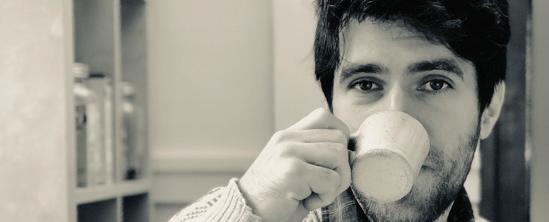
Nov. 1, 2021 marks the beginning of the fifth annual Treaties Recognition Week in Canada, which was created in 2016 in response to the Truth and Reconciliation Commission Calls to Action. It promotes an understanding of treaties themselves as well as their histories and contexts.
For me, part of Treaty Recognition Week is recognizing one’s own relationship with local treaties. Here in Kitchener-Waterloo, we are situated on The Haldimand Tract, a section of land from a 1784 proclamation that promised six miles on either side of the Grand River to the Six Nations of the Grand River.

As a Jewish-Scottish-Irish settler who was raised on Treaty One and Treaty Three territories and who currently lives on the Haldimand Tract, I must acknowledge the responsibility that comes with being a treaty person. As poet Armand Ruffo Says, “In Canada, we are all treaty people,” And so, it is my responsibility to learn about these treaties and the way I came to participate in them.
In my case, as a settler, I represent the Crown and their unfulfilled treaty promises. How did I enter into this agreement? It begins with my family’s immigration to Canada in the early 1900s.
For many, this self-identification can get complex as many Canadians’ ancestors, like my own, come from diverse places and cultures.
For me, looking into some of the history and traditions surrounding the Treaties (especially the ones in regions where I have lived) has been helpful. For example, AnishinaabeMétis legal scholar Aimée Craft describes some of the core issues with Treaty One, “With respect to property law, the Anishinabe dictated that the land was never to be bought or sold, never acquired or surrendered, but only shared. The Anishinabe did not surrender their land in the Treaty One negotiations. It was not in their power to do so, as they did not own it.”
For me, understanding this requires some learning as well as some internal work. I find myself needing to ask questions about property and land ownership.
What do I believe?
What did my ancestors believe?
What does my culture believe?
What does Western culture believe?
What does modern Canada believe?
Personally, I agree with the Anishinabe signatories. I cannot understand how land can be the property of people. Land is to be shared, not owned, not exploited.
In the Jewish tradition too, all land belongs to God.
One treaty that has always been inspiring to me is the Two Row Wampum Belt, which was created in the early 1600s between the Haudenosaunee and the Dutch.
According to Onondaga Nation’s website, “the belt has two purple rows running alongside each other representing two boats. One boat is the canoe with the Haudenosaunee way of life, laws, and people. The
other is the Dutch ship with their laws, religion, and people in it. The boats will travel side by side down the river of life. Each nation will respect the ways of each other and will not interfere with the other. Together we will travel in Friendship and in Peace Forever; as long as the grass is green, as long as the water runs downhill, as long as the sun rises in the East and sets in the West, and as long as our Mother Earth will last.”
Thinking about the Two Row Treaty, I feel compelled to uphold the part of the settler, to not interfere with the path of other Nations. Another interesting observation to the Two Row is made by Susan Hill and Leroy Little Bear (among others) who note the significance of the rows of white beads in the belt. These rows symbolize the path between the vessels. This was to be a “constant of respect, trust and friendship. Some might say this is what kept the two vessels apart, but in fact, it is what kept them connected to each other.”
This idea of the “shared river” between the boats connects to a foundational reason for the existence of treaties: to bind distinct people together in a trust of mutual respect. This treaty helps me to feel that I’m not alone on this ‘river of life’ and that myself and my ancestors were and remain signatories to these wonderful terms.
I’d say it’s due time we respected them.
NOVEMBER 2021 // COMMUNITYEDITION.CA 15
The Haldimand Tract in Southern Ontario extends 10 km from each side of the Grand River, beginning at Lake Erie.
CHRISTINA MANOCCHIO PHOTO
A MONTH OF INTENSITY AND MYSTERY
COSMIC RELIEF
ELFIE KALFAKIS COLUMNIST
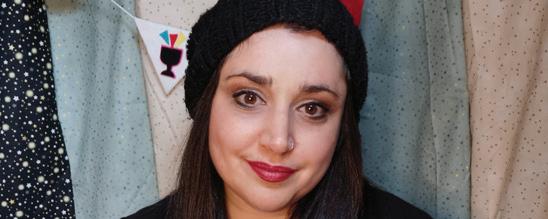
With autumn in full swing and winter on the horizon, Scorpio season brings us an intensity that pushes us into the darker months. After the lighthearted energy of the summer, Scorpio is a cut-thebull season that asks us to face our inner demons and plunge into the subconscious waters fearlessly.
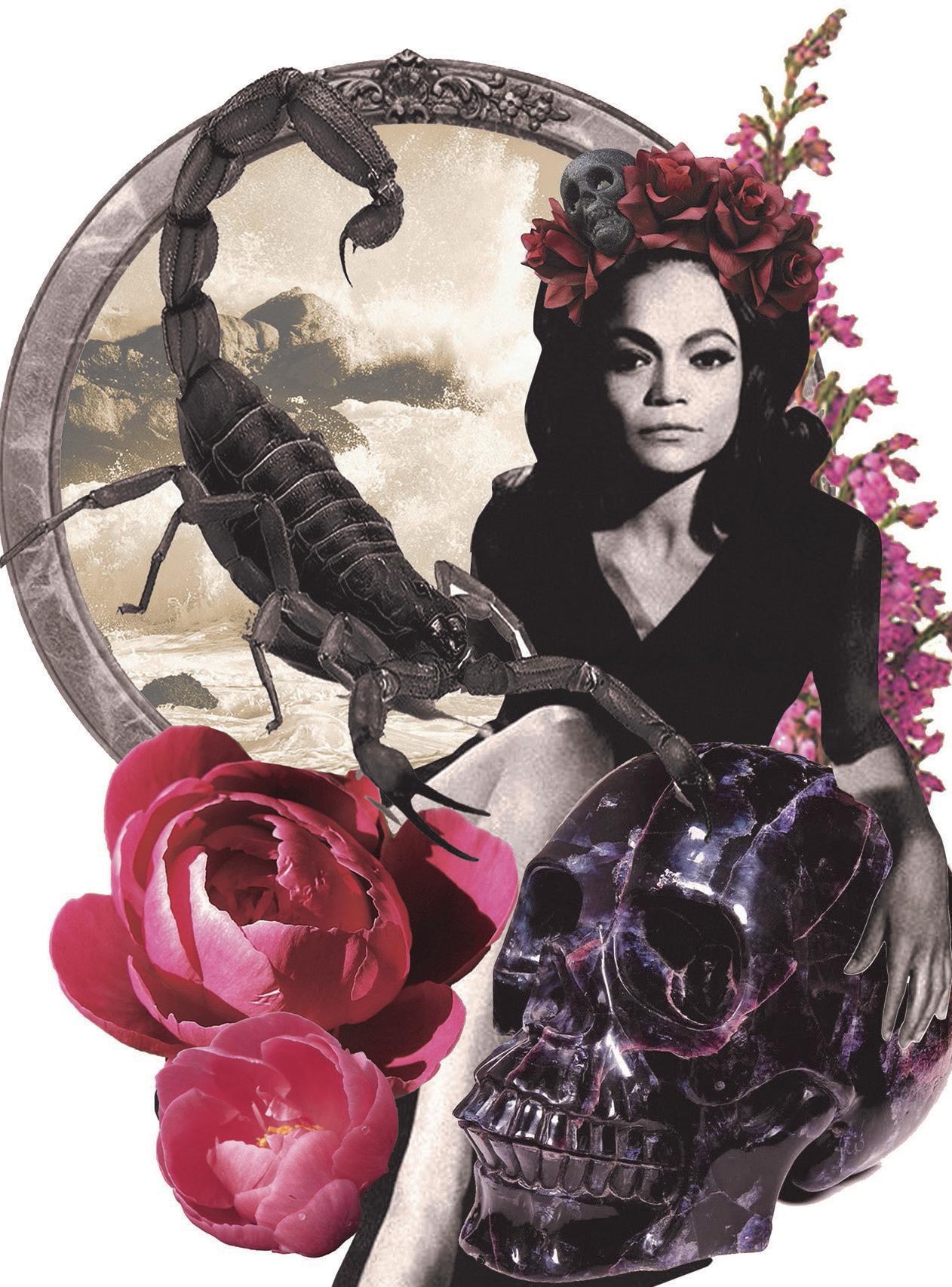
The sun enters this deep and mysterious sign Oct. 22 through to Nov. 23. This year, we have even more planets transiting through this fervent sign. With Mars, Mercury and a new moon this month, we can expect lots of focus on transformative, taboo, sexual and subliminal aspects of ourselves imagine a month long Addams Family festival. As Venus transits through the sign of Capricorn, we are going to be desiring the best of the best and will likely be competitive about it.
So, intense feelings, tumultuous conversations, penetrating energy and lots and lots of mystery this month.
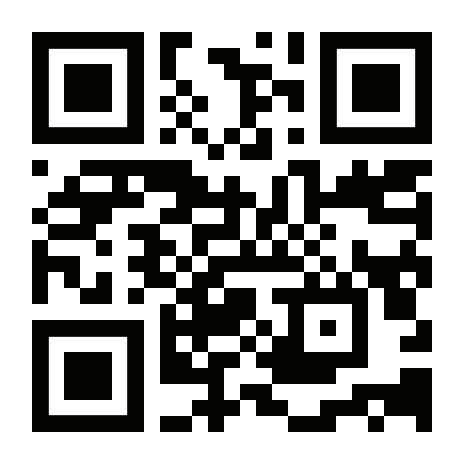
Scorpio
Whatever has been holding you back is no longer an issue. There is a window of time this month to get the most out of your sharp tongue and dedication toward your goals. Use them both wisely.
Aquarius
You are watching a lot of action from the sidelines this month. You’ll likely have a lot to say about it, and perhaps this month is the right time to subtly express that inner critic to the world.
Taurus
You’re digging the change of season and getting comfortable in the lavishness of fall. You’ll likely want nothing to do with anyone, so take this month to indulge in some long overdue self care.
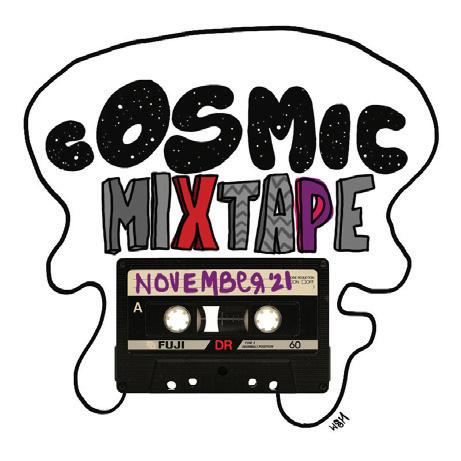
Sagittarius
Get your ducks in a row this month because there is a catapult of energy coming your way. By the end of this month you should be fully recharged and ready to act on some longawaited plans.
Capricorn
You’re a hot commodity this month and will find yourself offering advice to those around you. Take some time to scope out your options because the right moment to launch your next project is coming up soon.
Pisces
There is a lot of emotional movement in your life right now. As much as you don’t like confrontation, it may be unavoidable. Just know it’s likely not about you and more about how you can help those around you.
Aries
You may feel caught in the crosshairs at the beginning of the month, but emotions will cool as the full moon arrives. Although you may not like to hear this, patience is key for you this month, so take it easy.
Gemini


Expect the unavoidable this month. Those conversations you’ve been distracting yourself from are likely going to surface. So pull up your socks and do what you do best—talk it out.
Leo
You’re feeling a little left out these days, but rest assured it’s only because you’re not part of the drama. Shine along the sidelines and avoid getting involved this month. You’ll be happier you stayed out of it.
Virgo

This month will feel like you’re watching a soap opera and you’ll have lots to say about what’s going on. Just be mindful that emotions are high, so a little tact in your observations will be helpful.
“You Don’t Own Me” by Lesley Gore

“Yoo Hoo” by Imperial Teen
“Drink You Sober” by Bitter:Sweet
Cancer

Your instincts have been buzzing lately. This month your intuition is likely going to steer you into some emotional waters. You’ll be needed for some love and support this month, so spread the love like you do best, with grace.
Libra



This month will make you feel like you want to lay on a chaise and ignore your obligations. You’ll likely feel pulled to play peacemaker, but it’s probably best to focus on indulging in some self care and the finer things you love.
“L’Ennui” by The Brian Jonestown Massacre
We Only Come Out At Night The Smashing Pumpkins
NOVEMBER 2021 // COMMUNITYEDITION.CA 16
ELFIE KALFAKIS GRAPHIC
“Lady Your Roof Bring Down” by Scott Weiland
“Lovely Head” by Goldfrapp
“Mystery” by Jesse Jo Stark
“Dealer” by Lana Del Rey
“New Love Cassette” by Angel Olsen
“you should see me in a crown” by Billie Eilish
“Run” by AWOLNATION
“Closer” by Nine Inch Nails
“Angel” by Massive Attack
“Psyche” by Nouvelle Vague, Sir Alice
“Red Right Hand” by Nick Cave & The Bad Seeds
“A Girl Like You” by Edwyn Collins
“Sunny Side Of Hell” by Oasis
“F’@k You Lucy” by Atmosphere

























 HARLEEN KAUR DHILLON EDITOR-IN-CHIEF
HARLEEN KAUR DHILLON EDITOR-IN-CHIEF


















 KAITLYN SEVERIN STAFF WRITER
KAITLYN SEVERIN STAFF WRITER





































































































